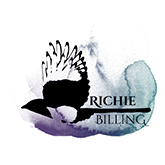
- Short Stories
- Writing Tips
- Fantasy Writing
- Worldbuilding
- Writing Classes
- Writing Tools
- Progress Report

15 Amazing Words To Describe The Moon, With Definitions And Example Sentences
When we write out stories, many scenes take place at night. A prominent feature of those scenes is the moon and starry sky.
But to enrich your story and draw your readers deeper into the scene and to help them understand what it feels like to be there, we need vivid descriptions, ones that draw upon the likes of the 5 senses .
So to help you achieve that, you can find a list of 15 brilliant words to describe the moon, complete with definitions, examples and guidance on how to use them in your writing.
Here’s the quick list, and below you can find the definition, examples and guidance on each:
1. Ethereal
3. nocturnal, 4. crescent, 6. eclipsed, 8. cratered, 10. gibbous, 12. luminous, 13. desolate, 15. resplendent.
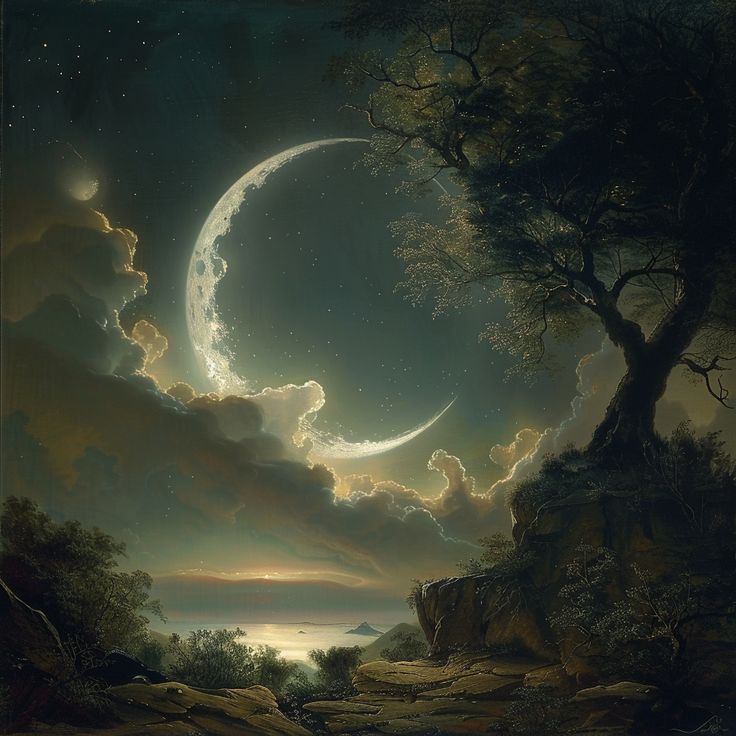
Delicate and light in a way that seems too perfect for this world; heavenly or celestial.
Example Sentences
The ethereal light of the moon gave the night an otherworldly glow.
She looked ethereal, bathed in the moon’s gentle light.
How To Use The Word
Use “ethereal” to describe the moon’s light when it appears delicate, almost otherworldly.
Relating to or resembling the moon
The astronauts conducted various experiments on the lunar surface.
The lunar cycle influences the tides on Earth.
Use “lunar” when referring to anything related to the moon.
Active or occurring during the night.
The nocturnal glow of the moon guided the travelers through the forest.
Owls and other nocturnal creatures thrive under the moonlight.
Use “nocturnal” to describe activities or phenomena that happen at night, often under moonlight.
The shape of the visible part of the moon when it is less than half illuminated.
A delicate crescent moon adorned the evening sky.
The crescent moon looked like a celestial smile hanging above.
Use “crescent” to describe the moon when it is in a thin, curved shape.
Having the appearance of or resembling silver; shiny and grey-white.
The silvery light of the moon bathed the landscape in a magical glow.
Her hair shone with a silvery sheen under the moonlight.
Use “silvery” to describe the moon’s light when it appears bright and metallic, like silver.
When one celestial body moves into the shadow of another, particularly when the moon passes into the Earth’s shadow.
The lunar eclipse left the moon partially eclipsed and cast in a reddish hue.
As the moon was eclipsed by the Earth, the night sky darkened.
Use “eclipsed” to describe the event when the moon is obscured by another celestial body.
Light in color or shade, often suggesting a gentle or subdued light.
The pale light of the moon made the garden look almost ethereal.
Under the pale moon, shadows seemed to dance around the old oak tree.
Use “pale” to describe the moon’s light when it appears soft and subdued.
Marked with craters, as the surface of the moon.
The cratered landscape of the moon was visible through the telescope.
Moon missions have mapped out the heavily cratered regions.
Use “cratered” to describe the surface of the moon when referring to its many craters.
The process of the moon increasing in visibility, moving from a new moon towards a full moon.
Each night, the waxing moon grew larger and brighter.
They planned their hike to coincide with the waxing phase of the moon.
Use “waxing” to describe the moon when it is becoming more visible each night.
The shape of the moon when it is more than half illuminated but not yet full.
The gibbous moon cast a bright light over the fields.
As the moon approached fullness, its gibbous form became more pronounced.
Use “gibbous” to describe the moon when it is more than half but not fully illuminated.
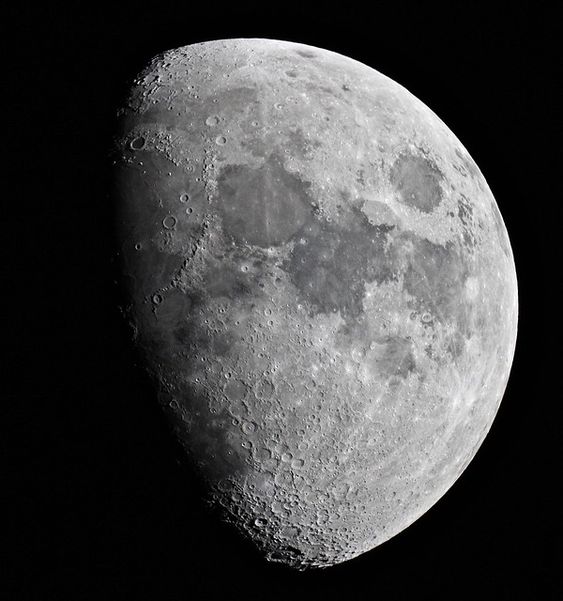
A spherical or round object, often used poetically to refer to the moon.
The orb of the moon hung low in the sky, glowing softly.
She gazed at the luminous orb, lost in thought.
Use “orb” as a poetic or literary term to describe the shape of the moon.
Emitting or reflecting light, especially in the dark; glowing.
The luminous moon lit up the entire valley.
Her eyes sparkled like the luminous moon in the night sky.
Use “luminous” to describe the moon when it is bright and glowing.
Deserted and barren, often evoking a sense of emptiness.
The desolate surface of the moon is covered in dust and rocks.
Standing on the desolate plain, he felt as if he were on the moon.
Use “desolate” to describe the moon’s surface when emphasizing its barren and empty nature.
Relating to or resembling the stars or other celestial bodies.
The moon, along with the astral bodies, created a breathtaking nightscape.
They marveled at the astral beauty of the moon and stars.
Use “astral” to describe the moon in the context of other celestial phenomena.
Shining brilliantly; gleaming; splendid
The resplendent moon filled the night with its radiant glow.
Under the resplendent moonlight, the garden looked like a fairy tale.
Use “resplendent” to describe the moon when it is shining brightly and beautifully.
Thanks for reading! If you’d like to discover more writing tips and guides to help you master the craft of stroytelling, head here to get started. And if you’d like to discuss more ways or words to describe the moon with fellow writers, why not join our Discord writing group ? You can learn more here.
If you’d like to learn more about words that begin with the letter E that you can use to describe someone, check out this guide. You can find words to help you describe someone in a positive or negative way, complete with definitions. And this guide offers similar with words to describe a book , this one has a list of adjectives that start with A and this one with F , and this one has some great words to describe a teacher . You can also check out these lists of awesome adjectives that start with R and a mega list of adjectives to describe someone .
- Recent Posts
- Brilliant Adjectives To Describe A Person - August 17, 2024
- Adjectives That Start With ‘R’ - August 12, 2024
- Adjectives That Start With A – Mega List With Definitions - August 3, 2024
richiebilling
About author, related posts, brilliant adjectives to describe a person, adjectives that start with 'r', adjectives that start with a - mega list with definitions, leave a reply cancel reply.
Your email address will not be published. Required fields are marked *
Save my name, email, and website in this browser for the next time I comment.
Notify me of follow-up comments by email.
Notify me of new posts by email.
This site uses Akismet to reduce spam. Learn how your comment data is processed .
Read my debut fantasy novel, Pariah’s Lament
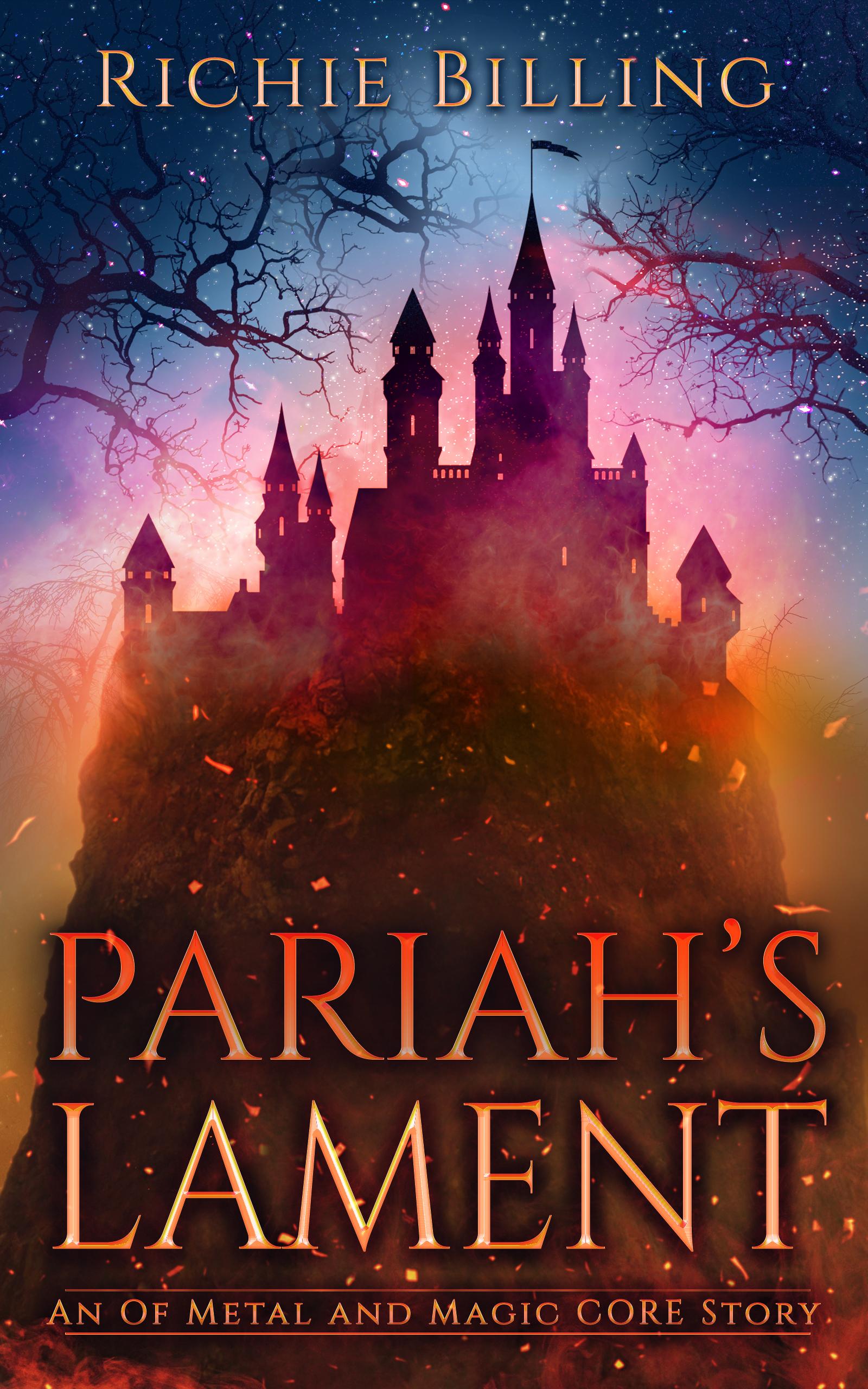
Sign Up For Free Stories!
Email address
Read my guide to writing fantasy, A Fantasy Writers’ Handbook
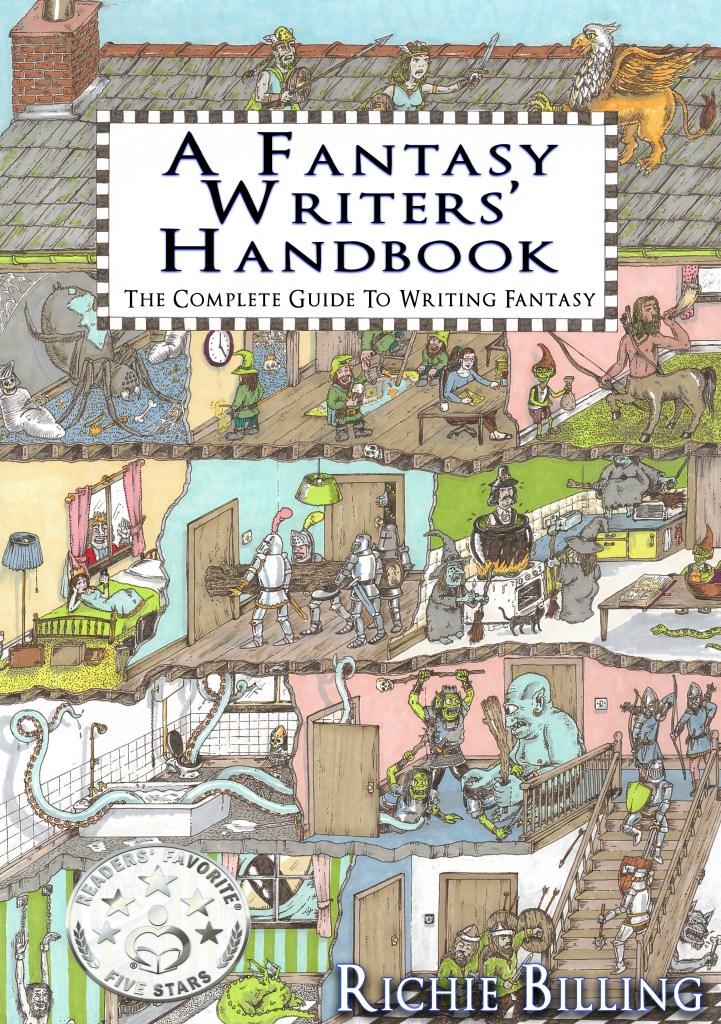
Adjectives That Start With F - With Definitions
Fantasy castle: gallery, blueprints and ideas, quick links.
- Get In Touch
- Reviews And Testimonials
- Editorial Policy
- Terms Of Service
- Privacy Policy
- Cookies Policy
- Equality, Diversity And Inclusivity (EDI) Policy
- Affiliate Marketing Policy
- Payment Information

Follow On Social Media

Forgot your password?
Lost your password? Please enter your email address. You will receive mail with link to set new password.
Back to login

No thanks, close this box

19 Best Moon Metaphors for Writers
The moon is an ever present feature of the night’s sky, and the most attractive and grand feature at that. So the use of the moon as a metaphorical device in writing can create a vivid picture in the reader’s mind of the context of a scene.
Some of the best moon metaphors to describe the moon include:
- A pearl in the black sea
- An eye watching over us
- Nature’s clock
Metaphors describing the rising of the moon include:
- The moon started its shift
- The moon woke early
Some proverbs and idioms about the moon include:
- I’m over the moon
- I’m shooting for the moon
These metaphors and more are described below.

> This article is from our A-Z series on metaphors
Metaphors that Describe the Moon
1. a big white dinner plate.
One of the first things you might be able to relate the moon to is a dinner plate. On a night with a full moon, it looks like a shining plate that you could pluck out of the sky, give a wash, plate up, and eat the food right off it.
2. The world’s billboard
It may be cost prohibitive right now, but could you imagine the moon having a Pepsi or Coke logo slapped across it? While it can’t literally occur, we could turn this into a metaphor. We might say that the moon is a billboard for our common humanity – which may mean that all of us look up and see the same moon, which is a testament to the fact we share the one planet.
3. A pearl in the black sea
There is an array of potential moon metaphors that involve the fact that the moon is a single large object in the sky. Sure, there are stars in the sky, but nothing that compares to the size and grandeur of the moon. So, we can think of ways of talking about how solitary it is – such as saying it’s “a lone pearl in the black sea”. It looks a bit like a pearl, and the blackness behind might be metaphorically constructed as an ocean.
4. A lonely figure searching for friends
Another way of referring to the fact that the moon is a solitary figure in the sky is to personify it – where personification is a type of metaphor that gives an object human qualities. Here is an example: The moon is feeling lonely. Or, you can spruce that up some more, with the saying: the moon is a lonely figure searching for friends in the sky.
> Read Also: Loneliness Metaphors
5. A boat floating in the ocean
The third metaphor about the moon’s loneliness among a backdrop of blackness is the idea that it is ‘floating’. There seems to be no effect of gravity making it fall to the ground (although gravity does hold it close to earth). So we can say it floats – which relates the moon’s ability to seemingly hang in the sky to the ability of boats to float in the ocean.
To continue this further, we might even say it’s a boat floating in a black metaphorical ocean . And if the stars behind are particularly bright, we could say it’s a boat floating in an luminescent ocean, perhaps.
6. A coin flipped in the sky
The roundness of the moon can again be employed in this situation where we talk about the moon as a coin – which of course is also circular. But here, there is more that can be done. Can we talk about it flipping like a coin. You could picture someone flipped a coin and it got stick in mid-air, becoming the moon as we know it today.
7. A crystal ball
What I like about the metaphor of the moon as a crystal ball is that it is magical any mystical. Maybe it’s God’s crystal ball, or even our own – if we look long and hard at the moon, might it reveal something about ourselves or even our futures?
8. An eye watching over us all
The idea of the moon as an eye reminds us of the sense that it’s looking over us. Just about anyone in the world can look up at night and see the moon. So it feels like it’s an omnipresent object, looking down upon us all like Big Brother in 1984. This metaphor also personifies the moon, giving it human (or even god -like) qualities.
9. The moon winks
To continue the idea of the moon being an eye, you might even say that it winks at you. Consider in a story a character who has just done something that no one saw. You might say they walked away successful in their mission, and the moon gave a knowing wink. Here, the implication is that the moon is the only thing that knows what happened.
10. A nightlamp hanging in the courtyard
Imagine sitting in a courtyard during the full moon and it lighting up the courtyard so much that it casts shadows. You might in this situation call the moon a nightlamp, guiding the way and providing you enough light to sneak through the night without stubbing a toe!
> Read Also: Night Symbolism
11. Nature’s clock
Because the moon completes a full cycle each day, a knowledgeable person might even be able to look at the moon and tell the time. Plus, given its shape, you could even imagine it to be a big round clock in the skies helping everyone keep touch with the time.
12. God’s Trophy
An interesting metaphor, this idea that the moon is God’s trophy makes us think that it’s something God is so proud of, he’s put it up in the skies for all of us to see. It’s analogous to placing a trophy on a mantlepiece in your living room so all of your guests will get a good look at it from all angles in the room.
Metaphors to Describe the Rising and Setting of the Moon
> See Also: Moon Symbolism
13. The moon woke early in the night
This idea that the moon wakes up each night makes reference to the idea that our sleep patterns are direct opposites to the night. You could say “the sun went to bed as the moon woke” or “the moon woke as I drifted off to sleep.”
Read Also: Sleep Metaphors
14. The moon starts its shift
Here, we’re referring to the ebb and flow of the moon and sun switching shifts. The moon’s shift begins as it breaks the horizon and ends when the sun wakes the following morning. This idea that the moon has a shift and the sun has a shift continues the motif of the sun and moon keeping watch over us, also.
Moon Idioms and Proverbs
Idioms and proverbs often contain metaphors, but are rhetorical ways of speaking that have become common in our everyday language. These proverbs may not be describing the moon, but employ the moon as a rhetorical device to paint a picture in the mind.
15. Shoot for the Stars and Reach the Moon
The stars are farther from us than the moon. So if we say we’re shooting for the stars but only reaching the moon, we’re saying that we’re going to try to get as far as we can. If we don’t make it the whole way, that’s okay. Because in the effort we made, we achieved something great still: the moon! This phrase is often used to refer to the idea that making a big effort can lead to positive outcomes, even if they’re not the ones we had expected.
16. Over the moon
To be over the moon is to be really excited. This phrase is an extension of the concept of “jumping with joy”. But you were so joyful that you jumped all the way over the moon!
17. One Giant Leap for Mankind
This saying was used by Neil Armstrong when he made his first step on the moon . He said: “One small step for man, one giant leap for mankind.” The saying refers to the concept that the moon landing was a sign of giant progress in the capabilities of humans. While not directly invoking the moon, this famous metaphor relates directly to a significant event involving the moon.
18. Living on the Dark Side of the Moon
No one can see the dark side of the moon from earth, so to say someone is living on the dark side of the moon is to say that they are hiding, introverted, or detached from the goings-on of life on earth. A similar phrase is “living under a rock”.
> See Also: Darkness Metaphors
19. Howling at the Moon
To howl at the moon is to make a lot of noise but have no one around to hear you. You could say “I may as well howl at the moon than talk to you.” It is similar to the phrase “I may as well be talking to a wall.” It refers to wolves who howl into the night, but also the idea that there’s no one around to listen but the moon, who as we know is always watching over us during the night time.
This list of moon metaphors is by no means extensive but gives a good starting-point for considering how to write engagingly about the night in stories. The moon is an ever present feature in the outdoors at night, and it’s majesty up in the sky makes it an excellent symbol to use in story lines. Stories about vampires, werewolves, or even people who use the cover of night to go about their business can benefit from use of moon metaphors or even the moon as a motif throughout a story.

I’m Chris and I run this website – a resource about symbolism, metaphors, idioms, and a whole lot more! Thanks for dropping by.

The Top 10 Descriptive Paragraphs About the Moon
Written by Dan
Last updated February 16, 2024
Do you ever look up at the night sky and feel completely in awe of its beauty and serenity? The moon is a stunningly gorgeous sight to behold, and it leaves many of us in wonder. But just how do you accurately convey this feeling using descriptive phrases?
In this blog post, we will be taking a look at 10 excellent examples of descriptive paragraphs about this celestial object that will surely inspire your own writing.
From its luminous glow to its craters-adorned surface, these examples truly capture the essence of the glowing satellite in unforgettable detail!
Related : For more, check out our article on Poems About The Sky here.
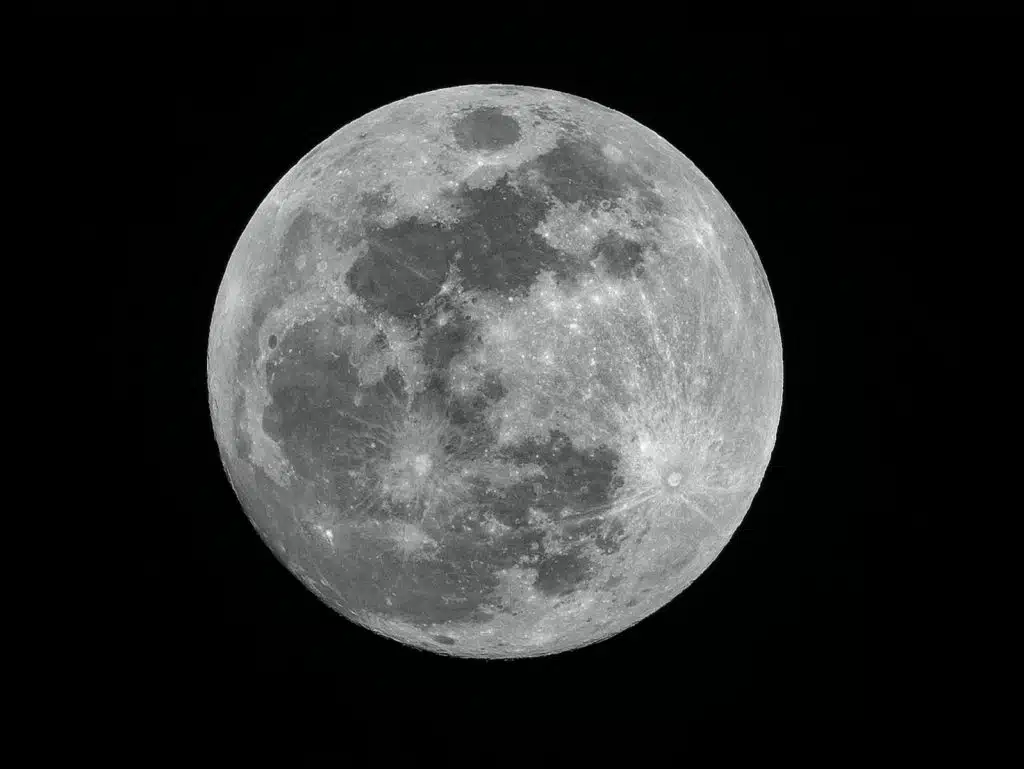
Table of Contents
1. The Moon’s Ethereal Beauty
The moon, a celestial body of enchanting beauty, hangs majestically like a silver medallion in the inky black night sky. Its surface, marked by eons of cosmic interaction, gleams with a metallic sheen that shimmers against the backdrop of infinite darkness.
It is as if an unseen artist, armed with nothing but a brush and palette of cosmic dust and starlight, has taken to the canvas of the sky, painting a picture of sublime tranquility.
The luminescent glow of the moon radiates across the expansive night, piercing through the veil of darkness, casting a glistening path for all to see. This ethereal beacon serves as a lighthouse in the otherwise unlit world, guiding lost souls and wandering hearts through the labyrinth of darkness with its gentle, comforting light.
The light of the moon is paradoxically soft yet piercing, a gentle illumination that doesn’t merely dispel the darkness, but transforms it.
It bathes the world below in a dreamscape of shimmering silver, making the mundane appear magical, turning the ordinary into the extraordinary. It lends the world an otherworldly glow, creating a silvery mirage that blurs the line between reality and fantasy.
Silent and unassuming, the moon stands guard over the world from its celestial throne. With a steady and unblinking gaze, it watches over us, a silent sentinel in the vast expanse of the universe.
It witnesses our joys and our sorrows, our triumphs and our failures, ever present, ever watchful. Its quiet vigil is a comforting presence in the chaos of life, a constant in an ever-changing world.
Despite its silent demeanor, the moon speaks volumes. Its ethereal beauty is a testament to the wonders of the cosmos, a reminder that we are but a small part of a larger, grander universe. Its quiet radiance is a symbol of hope and resilience, a beacon that proves light can thrive amidst darkness, a celestial testament to the enduring spirit of life.
Related : For more, check out our article on Poems About The Moon here.
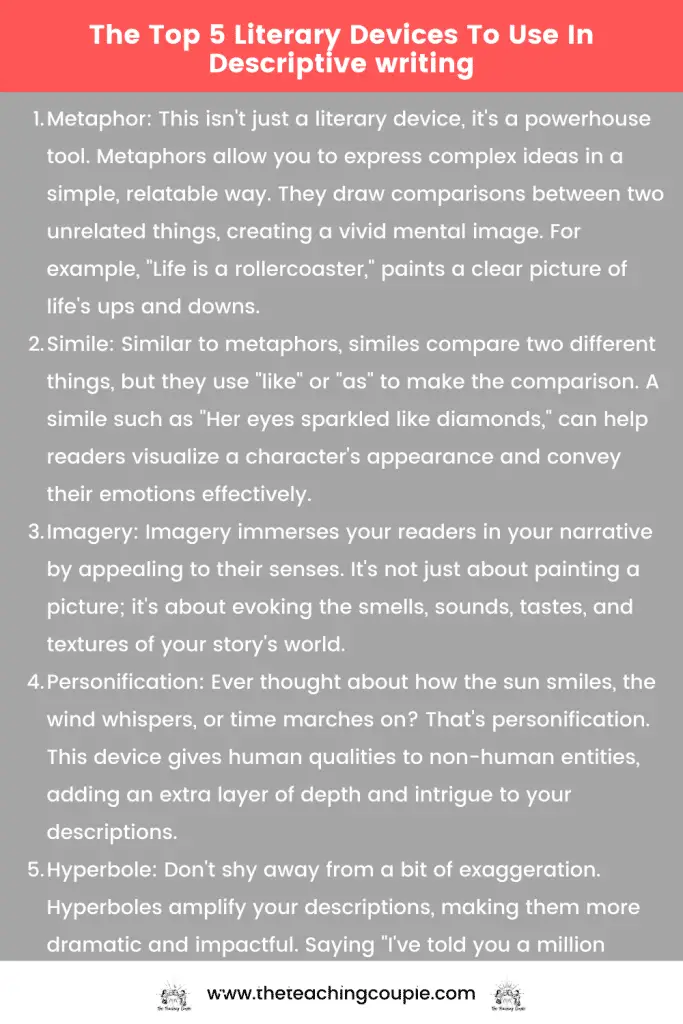
2. A Ballet of Light and Shadows
As the days pass, the moon embarks on a remarkable journey of transformation, an ethereal metamorphosis that unfolds in the vast theater of the cosmos.
Waxing and waning in an endless cycle, it performs an elegant ballet of light and shadows on the grand stage of the night sky, its movements synchronized with the celestial orchestra of stars and planets.
One moment it’s a thin sliver of light, a delicate crescent that appears to be gently cradling the enveloping darkness. This phase, known as the new moon, is when the moon is almost invisible against the backdrop of the night, a shy performer waiting in the wings for its turn to take center stage.
Slowly but surely, it begins to wax, growing incrementally larger each night. It transforms from a slim crescent to a half moon, its shape reminiscent of a perfect semi-circle drawn by an invisible hand in the sky. The darkness recedes, pushed back by the advancing light, creating a captivating interplay of light and shadow.
Finally, it reaches its full glory, becoming a full orb bathed in radiant light. The full moon casts long, ethereal shadows that dance and flicker across the landscape like ghostly apparitions. It’s as if the world below has been draped in a gossamer veil of silver, the familiar turned fantastical under the moon’s spell.
This spectacle of light and shadow is a testament to the moon’s dynamic nature, its ability to transform and adapt. It’s a silent proclamation of the moon’s resilience, its capacity to emerge from darkness to light and then retreat only to emerge again. This dance reflects the ever-changing rhythm of life, the cyclical nature of existence, the constant ebb and flow of time and tide.
Each phase of the moon is a different act in this celestial ballet, a visual narrative that tells the story of the moon’s eternal dance with the sun and the earth. It’s a performance that has been ongoing for billions of years, a timeless spectacle that continues to captivate us with its ethereal beauty and mystical allure.
Related : For more, check out our article on Descriptive Writing About King Charles here.
3. The Moon’s Silent Song
On still, quiet nights, when the world seems to hold its breath and every creature surrenders to the peaceful embrace of slumber, the moon steps onto her celestial stage to sing a silent song. The moon begins her solo performance as the stars twinkle like a choir in the background. It’s a symphony of soft light and tranquil silence that fills the vast expanse of the night sky, the melody a hushed whisper that reverberates through the cosmos, bouncing off distant stars and planets.
This melody is not made of notes, but of beams of light that dance across the sky, painting patterns on the canvas of the night. It’s as if the moon is strumming the strings of a celestial harp, each ray of light a different note in this quiet symphony. This is the echo of ancient cosmic forces, a tune only the heart can hear, a lullaby for the soul that evokes a sense of peace and serenity.
The moon’s song carries with it the wisdom of ages, the secrets of the universe whispered in a language that transcends words. It’s a song that has been sung since time immemorial, a timeless melody that resonates with the cosmic rhythm of the universe. Each phase of the moon is a different verse of this song, a lyrical journey that tells the story of the moon’s eternal dance with the sun and the earth.
As the song reaches its crescendo with the full moon, the world below basks in its serene glow, lulled into a state of tranquility by this celestial lullaby. And as the song slowly fades away, giving way to the break of dawn, the memory of the moon’s silent song lingers, a soothing melody etched in the heart of the night.
4. A Tapestry of Craters
The moon’s surface is a complex tapestry woven with rugged and uneven craters and valleys, much like an ancient parchment marked by time. This lunar landscape, bathed in silvery light, is a testament to the moon’s stoic endurance amidst the chaos of the cosmos. These are the indelible marks of eons of cosmic bombardment it has endured, each impact leaving a lasting impression on its celestial canvas.
Each crater, from the smallest dent to the largest basin, is a story of impact and survival, a narrative of the moon’s tumultuous past. They are scars of time, etched into the moon’s surface, a visual chronicle of its history that serves as a silent testimony to its resilience. The craters, with their jagged edges and deep hollows, stand as monuments to the moon’s perseverance, symbols of its ability to withstand the trials of time.
These craters are like open books, their pages filled with tales of cosmic collisions and celestial chaos. Each one carries within it the echoes of a violent past, a time when comets and asteroids rained down upon the moon, reshaping its surface with their explosive force. Yet, despite this intense bombardment, the moon has endured, its surface a testament to its unyielding spirit.
Among these craters, some stand out more than others. The Tycho crater, with its distinctive ray system, is a beacon of the moon’s resilience. The Mare Imbrium, one of the largest craters in the solar system, tells a tale of a cataclysmic impact that forever changed the moon’s face. The Copernicus crater, with its terraced walls and central peaks, is a masterpiece of lunar topography, a testament to the moon’s dynamic nature.
Each of these lunar features adds a unique stitch to the intricate tapestry that is the moon’s surface. Together, they form a pictorial record of the moon’s history, a testament to its enduring spirit and a reminder of the cosmic forces that continue to shape our universe.
| Paragraph Title | Description Focus | Sensory Details | Figurative Language | Atmosphere/Mood Created |
|---|---|---|---|---|
| Moon’s Mystique | The enigmatic presence of the moon in the night sky. | Silvery glow, faint craters visible to the naked eye, soft light casting shadows. | The moon hung like a guardian’s eye, keeping watch over the slumbering world. | Mysterious, protective, serene |
| Lunar Landscape | The barren, yet beautiful, surface of the moon as seen through a telescope. | Stark contrast between the bright lunar highlands and the dark maria, the ruggedness of craters. | The moon’s surface whispered tales of ancient collisions in a voiceless symphony of craters and dust. | Desolate, intriguing, magnificent |
| Harvest Moon | The appearance and cultural significance of the full moon closest to the autumnal equinox. | Rich orange hue, the illusion of an enlarged moon, clear autumn night. | The harvest moon ascended the horizon, a glowing medallion pinned to the chest of the evening. | Abundant, warm, nostalgic |
| Crescent Whisper | The delicate sliver of a waxing or waning crescent moon. | Thin crescent shape, the darkness of the new moon barely visible, the sharpness of the crescent’s curve. | A silver eyelash blinked through twilight’s curtain, heralding the secrets of the night. | Gentle, alluring, mysterious |
| Moon’s Reflection | The moon’s reflection on a body of water. | Rippling light on the water’s surface, the interplay of light and dark, the mirror-like quality of still water. | The moon painted itself in strokes of liquid silver across the canvas of the lake. | Tranquil, mesmerizing, reflective |
| Blue Moon Wonder | The phenomenon of a blue moon and its rarity. | The usual pale glow of the moon, with an imaginative hint of blue, the clear night sky. | The blue moon—a mischievous twist in the tapestry of the sky, a rare jewel that adorns the night only once in a while. | Enchanting, rare, whimsical |
5. The Moon’s Reflective Solitude
The moon does not shine with its own light, but reflects the sun’s rays with quiet dignity, like a humble servant paying homage to its master. It is a mirror suspended in the sky, capturing the sun’s brilliance and sharing it with the world even in the midst of encroaching darkness.
This reflective solitude of the moon makes it a symbol of hope, a promise of light amidst the shadows, a beacon guiding us through life’s darkest moments. Its silvery glow is a reminder that even in the darkest times, there is always a source of light, always a glimmer of hope.
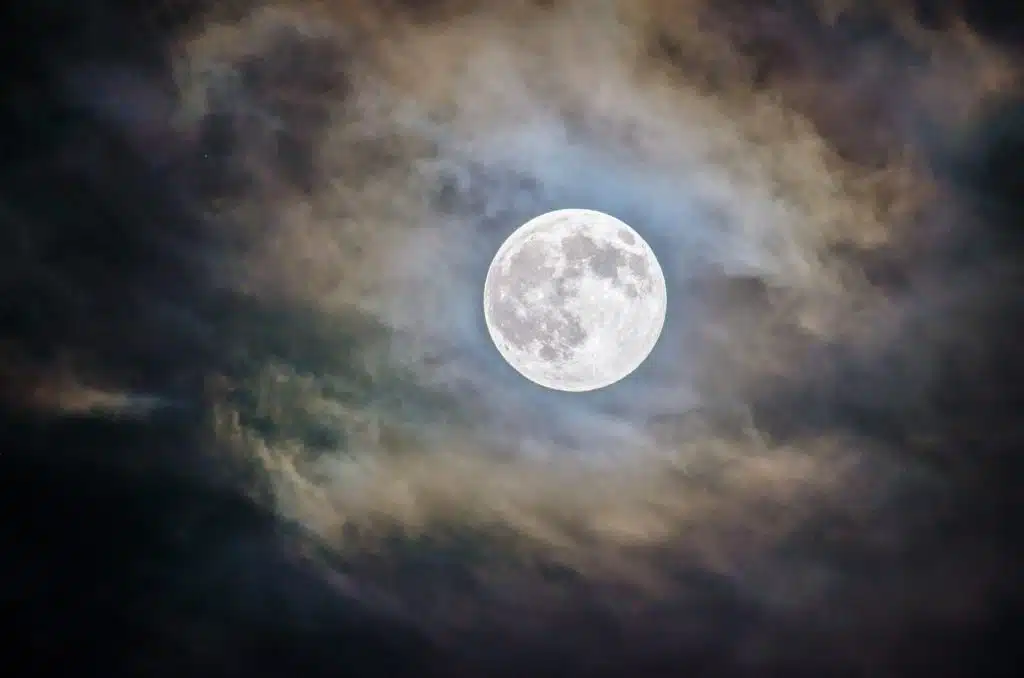
6. A Cosmic Clock
The moon is more than just a celestial body; it is a cosmic clock, marking the passage of time with its ever-changing phases. Each new moon heralds a fresh start, a blank canvas waiting to be painted with the vibrant hues of life.
As it waxes to fullness, it is a reminder of the cyclical nature of existence, the constant ebb and flow of time and tide, a lesson in patience and perseverance. The moon’s phases are like the hands of a clock, ticking away the seconds, minutes, and hours of our lives, a constant reminder of the fleeting nature of time.
7. The Moon’s Magnetic Pull
The moon exerts a silent pull on our planet, tugging at the restless oceans to create the rhythmic dance of the tides. It’s a subtle yet powerful reminder of the interconnectedness of all things, the invisible threads that bind us to the cosmos.
This gravitational bond transcends physical distance, an unseen force deeply felt, a reminder of our place in the grand scheme of the universe. The ebb and flow of the tides, driven by the moon’s magnetic pull, is a tangible demonstration of this cosmic connection, a daily reminder of our relationship with the celestial world.
8. A Companion in Solitude
In the solitude of the night, the moon is a comforting companion, a silent friend providing solace in the stillness. It offers a comforting presence, a soft glow in the darkness that soothes the soul and calms the mind.
It’s a constant in our changing lives, a familiar face in the ever-evolving tapestry of the sky, a symbol of constancy and reliability. Its gentle light is a source of comfort and reassurance, a beacon of hope in the midst of uncertainty, a constant companion in the journey of life.
9. The Moon’s Mystical Allure
The moon has a mystical allure, a captivating charm that has fascinated humans for centuries. It has served as the muse of poets, the inspiration for artists, and the subject of countless myths and legends.
It’s a symbol of mystery and magic, a celestial body shrouded in an aura of enchantment, its silvery glow instilling a sense of wonder and awe in the hearts of those who gaze upon it. Its mystique is timeless, a source of endless fascination and inspiration, a celestial muse that continues to captivate us with its ethereal beauty.
10. The Moon’s Unreachable Distance
Despite its apparent proximity, the moon is a world away, unreachable by the hand but not by the imagination. It’s a distant dream, a tantalizing goal that has spurred humanity to reach for the stars.
It’s a reminder of the vastness of the universe, the infinite possibilities that lie beyond our earthly confines, a testament to our innate desire to explore and discover. The moon’s unreachable distance is a challenge, a call to action, a catalyst that ignites the spark of exploration and adventure within us.
These examples have shown us the many ways in which the moon can be described, each one painting a unique picture that captures some aspect of its enchanting beauty.
From its role as a beacon of light in the darkness to its enduring spirit reflected in its scarred surface, the moon offers endless inspiration for those willing to look up and appreciate its majesty.
So, the next time you find yourself staring at the moon, let these examples guide your thoughts and inspire your words. Let the moon’s radiant glow ignite your imagination, let its tranquil presence soothe your mind, and let its timeless beauty captivate your heart. Remember, the moon isn’t just a celestial object; it’s a canvas for your creativity, a narrative waiting to be written, and a story waiting to be told.
Related Posts
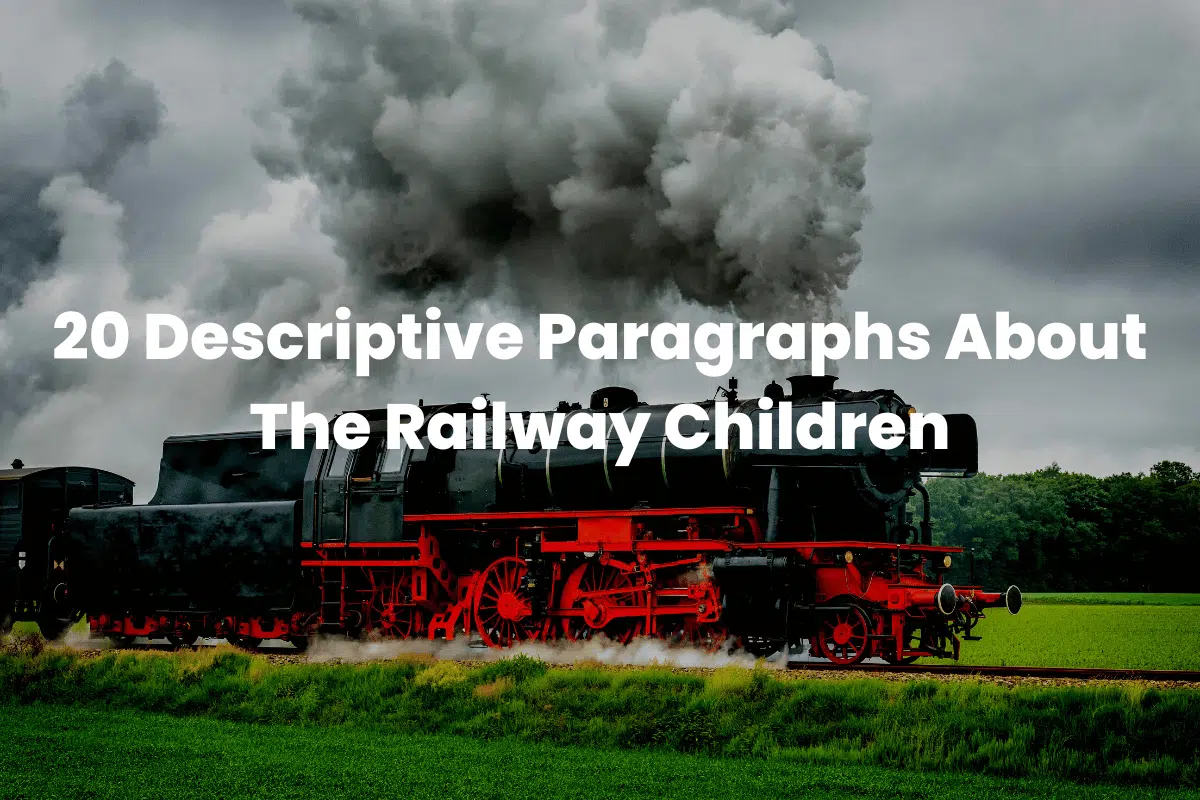
About The Author
I'm Dan Higgins, one of the faces behind The Teaching Couple. With 15 years in the education sector and a decade as a teacher, I've witnessed the highs and lows of school life. Over the years, my passion for supporting fellow teachers and making school more bearable has grown. The Teaching Couple is my platform to share strategies, tips, and insights from my journey. Together, we can shape a better school experience for all.

Join our email list to receive the latest updates.
Add your form here

12 Literary Quotes About The Moon
Writers Write is a comprehensive resource for writers. In this post, we share a selection of our favourite quotes about the moon.
A Blue Moon occurs when there are two full moons in one calendar month.
To celebrate today’s blue moon , I have chosen 12 of my favourite quotes inspired by the moon.
- Don’t tell me the moon is shining; show me the glint of light on broken glass. ~ Anton Chekhov
- The night walked down the sky with the moon in her hand. ~ Frederic Lawrence Knowles
- The moon had been observing the earth close-up longer than anyone. It must have witnessed all of the phenomena occurring – and all of the acts carried out – on this earth. But the moon remained silent; it told no stories. All it did was embrace the heavy past with a cool, measured detachment. On the moon there was neither air nor wind. Its vacuum was perfect for preserving memories unscathed. No one could unlock the heart of the moon. ~ Haruki Murakami
- Yours is the light by which my spirit’s born: – you are my sun, my moon, and all my stars. ~ E.E. Cummings
- Moonlight drowns out all but the brightest stars. ~ J.R.R. Tolkien
- Tell me the story about how the sun loved the moon so much he died every night to let her breathe. ~ Lokesh Fouzdar
- If the Sun and Moon should ever doubt, they’d immediately go out. ~ William Blake
- It enclosed us in its laceries as we watched the moon spill across the Atlantic like wine from an overturned glass. With the light all around us, we felt secret in that moon-infused water like pearls forming in the soft tissues of oysters. ~ Pat Conroy
- Moonlight is sculpture. ~ Nathaniel Hawthorne
- There are nights when the wolves are silent and only the moon howls. ~ George Carlin
- So, we’ll go no more a roving So late into the night , Though the heart be still as loving, And the moon be still as bright. ~ Lord Byron
- If the moon smiled, she would resemble you. You leave the same impression Of something beautiful, but annihilating. ~ Sylvia Plath
I also looked for a selection of novels with the word ‘moon’ in their titles.
10 Books With ‘Moon’ In The Title
- The Moon is a Harsh Mistress by Robert A. Heinlein
- Moon Palace by Paul Auster
- Goodnight Moon by Margaret Wise Brown
- Turtle Moon by Alice Hoffman
- Moon Tiger by Penelope Lively
- The Glimpses of the Moon by Edith Wharton
- On the Night of the Seventh Moon by Victoria Holt
- Wolf Moon by Charles de Lint
- The Moon and Sixpence by W. Somerset Maugham
- Keeping the Moon by Sarah Dessen
Top Tip : Find out more about our Writing Courses . If you want to learn how to write, join us in Johannesburg or sign up for our online courses.

If you enjoyed this post, you may want to read:
- Nine Literary Scrabble Quotes
- The Top 12 Quotes About Literature
- 20 Literary Quotes About Cats
- The 25 Best Quotes About Authors
- The Top 10 Quotes About Coffee
5 thoughts on “12 Literary Quotes About The Moon”
Hello from a farm in NW Wisconsin,
I’m a published author and a pumpkin seed oil producer.
All three of my published novels have ‘Moon’ in them.
They are; ‘Moon Over Madeline Island, Back to Madeline Island, and Full Moon Over Madeline Island.” All available on Amazon UK, Amazon Canada, Amazon US .
I LOVE the moon and am truly enjoying being a part of this site. I can’t thank you all enough for the tremendously powerful information you all share with us.
See you in the field!
Thank you for sharing, Jay.
The Moon is Down by John Steinbeck. It’s a resistance novel which was so influential to underground movements that Hitler banned it, and Steinbeck was given an commendation by one of the occupied countries after the war for inspiring the war effort in occupied countries.
I love the moon quotes, especially #3 and #8! 🙂
Without astronomy, what personality held the romance of the moon! Without the mythology, what magnificent light and energy is reflected by its surface. Tonight, I sit on a boat on the river and bathe in the blue moonlight.
Comments are closed.
© Writers Write 2022
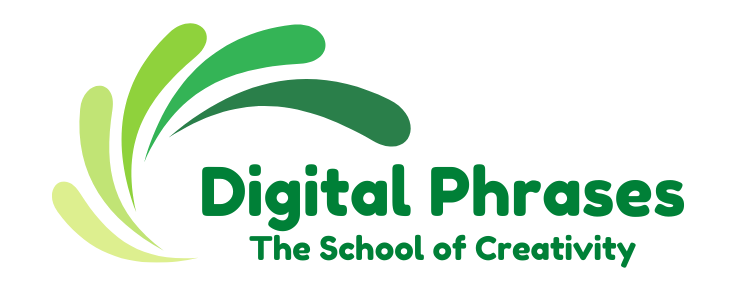
24 Writing Prompts About The Moon
For ages, the moon has been this super cool, glowy orb that everyone’s been obsessed with. It has inspired poems, helped people find their way around at night, and even gotten scientists all riled up.
From its spooky glow to its shape-shifting ways, the moon is just plain fascinating.
This post is all about sparking your creativity and getting you more in touch with that moon magic.
We’ve got some writing prompts to help you explore this awesome white piece of art in a metaphorical way of course.
Writing Prompts About The Moon
A Lunar Village: The First Frontier Community : Imagine that humanity has decided to establish a permanent base on the moon. This is not a mere scientific outpost, but a full-blown village intended for families, complete with a school and other social amenities. Your task is to describe a day in the life of a child growing up in this lunar village , highlighting the unique challenges, experiences, and joys of lunar living.
Tidal Effects: A World Without Moon : It’s well-known that the moon affects the earth’s tides. Suppose one day, the moon mysteriously vanishes from the night sky. Write about how this sudden disappearance of the moon would impact the natural and human world , taking into account aspects such as tidal changes, the implications for nocturnal creatures, and the effect on human culture and emotions.
Moon’s Secret: An Unexpected Discovery : Imagine that during a lunar exploration, scientists uncover evidence of ancient life on the moon. This life form is unlike anything we’ve ever seen on Earth. Your task is to describe this newfound lunar life form , detailing its biological characteristics, potential origins, and how this discovery affects our understanding of life in the universe.
Lunar Love: Romance Under the Silver Glow : The moon has always been a symbol of love and romance. Write a love story set on a moon base, where two astronauts find love amidst their lunar duties. Detail their unique courtship, their romantic moments under the ethereal lunar sky, and how the harsh yet beautiful lunar environment shapes their relationship.
Lunar Mining: The New Gold Rush : Consider a future where the scarcity of certain resources on Earth leads to the commercialization of lunar mining. Write about the ethical, environmental, and socio-economic implications of mining the moon , detailing the conflict between the desperate need for resources and the potential devastation of an untouched celestial body.
Moonrise Kingdom: Lunar Politics : In this scenario, multiple nations have established their territories on the moon. Explore the political dynamics of these lunar nations , from territorial disputes to the creation of a new lunar governing body, and how these developments mirror or diverge from Earth’s political landscape.
Lunar Tourism: The Ultimate Getaway : In the not-so-distant future, lunar tourism has become a reality. Wealthy individuals can take a trip to the moon for an unforgettable vacation. Describe the experience of a lunar tourist from the journey, to their stay on the lunar hotel, to the lunar activities they partake in , and how this extreme form of tourism changes their perspective on life and the universe.
Moonlit Melodies: The Sound of the Moon : Imagine a future where we’ve found a way to ‘listen’ to the moon, interpreting its seismic vibrations into musical notes. Compose a description of this ‘moon music’, its impact on Earth’s music scene, and how it resonates with listeners , touching on themes of unity, awe, and the cosmic connection of all things.
Moon’s Dark Side: A Mysterious Phenomenon : Even with the advancement of technology, the dark side of the moon remains largely unexplored and mysterious. Picture a scenario where an unexpected signal starts emanating from this uncharted territory. Describe the mission to investigate the signal, the astonishing discovery made, and the implications it holds for our understanding of the moon.
Lost in Lunar: Survival on the Moon : Imagine an astronaut gets stranded on the moon due to a spacecraft malfunction during a routine mission. The rescue mission from Earth will take time. Write a gripping tale of this astronaut’s struggle for survival on the hostile lunar surface, their resourcefulness, and emotional journey.
Lunar Legacy: The Moon as a Time Capsule : In the future, nations decide to use the moon as a ‘time capsule’, burying artifacts and messages for future civilizations or even extraterrestrial beings to discover. Describe the selection process of these items, the ceremony of their placement, and what they communicate about humanity at this point in time.
Moon’s Mirage: A Lunar Illusion : One night, an unexplainable, mesmerizing phenomenon occurs on the moon’s surface visible from Earth. Scientists are baffled, and the world is captivated. Write about the investigation into this lunar illusion, its explanation, and the impact it has on society.
Lunar Rehabilitation: Prison on the Moon : In an overpopulated future, Earth decides to establish a high-security prison on the moon for the worst criminals. Detail the life of a warden at this lunar prison, their interactions with the prisoners, and the ethical issues surrounding this concept.
Moonlit Muse: Inspired by the Moon : The moon has long been a source of inspiration for artists. Imagine a future where an artist colony is established on the moon. Describe the works they create, inspired by their unique lunar perspective, and how they revolutionize the art world back on Earth.
Lunar Agriculture: Farming on the Moon : As a solution to the food crisis on Earth, a project is initiated to attempt farming on the moon using specially developed technologies. Write about the trials, tribulations, and successes of this lunar farming initiative, and its impact on Earth’s food supply.
Moon and Mental Health: Impact of Lunar Living on Mind : Living on the moon can have profound effects on mental health due to the isolation, alien environment, and the sight of Earth so far away. Narrate the story of a lunar resident coping with ‘lunar melancholia’, their struggle, resilience, and the innovative ways mental health professionals offer support from Earth.
The Lunar Library: Knowledge in the Craters : The moon has been chosen as the site for the first interstellar library, a collection of all human knowledge intended for future generations or potential extraterrestrial contact. Write about the construction, curation, and significance of this lunar library , detailing its content, the selection process, and the challenges of maintaining such a repository.
Solar Power: Energy from the Moon : As Earth struggles with an energy crisis, a company develops an innovative solution – harnessing solar energy from the moon, where the sun always shines. Describe the process of setting up the solar farms, the technology used to transmit energy back to Earth, and the societal implications of this project.
Moonlit Memoirs: A Lunar Settler’s Diary : Consider a scenario where you are one of the first settlers on the moon. Your task is to keep a diary detailing your experiences. Document a series of diary entries capturing the highlights, struggles, and everyday mundanity of living on the moon , providing a personal perspective of this extraordinary lifestyle.
Lunar Sports: The New Frontier of Athletics : In the low gravity of the moon, sports take on a whole new dimension. Imagine a world where lunar sports are the latest craze. Create a detailed description of a new sport invented for lunar conditions, including its rules, strategies, and the thrill of playing or watching it.
Moon’s Shadow: A Lunar Ghost Story : The moon, with its desolate landscape and eerie tranquility, could be a fitting backdrop for a ghost story. Write a chilling tale set on a lunar base where residents start experiencing unexplainable occurrences , adding an element of mystery and terror to the cold, quiet moon nights.
Lunar Sanctuaries: Preserving Earth’s Ecosystems on the Moon : In a desperate attempt to preserve Earth’s endangered ecosystems, scientists decide to establish bio-domes on the moon. Write about the challenges of replicating Earth’s diverse ecosystems on the moon , the life inside these domes, and the ethical dilemmas of such a project.
Moon Migration: A Forced Exodus to the Moon : Imagine a dystopian future where life on Earth becomes unsustainable, forcing a mass migration to the moon. Describe the journey of a family adapting to their new home, the social and cultural changes this mass migration incites, and the struggle to keep Earth’s memory alive.
Lunar Celebrations: Festivals on the Moon : As the lunar community grows, they start developing their unique traditions and festivals, influenced by both their earthly heritage and lunar living conditions. Write about a lunar festival – its origins, how it’s celebrated, and its significance to the lunar society.
Founder and Chief Content Curator @ Digital Phrases
I'm a writer, words are my superpower, and storytelling is my kryptonite.
- 0 Shopping Cart £ 0.00 -->
Creative writing describing the moon
Creative writing describing a moon, creative writing describing places, further information.
- homework helper grade 5 module 4
- smoke smell creative writing
- cover letter writer sydney
- resume writing service anchorage ak
- peruvian kid doing homework
- best quotes about creative writing
Contact Details
Modern Bookbinders Ltd Pringle Street Blackburn Lancashire BB1 1SA UK
Email: modern.binders@btconnect.com Tel: 01254 59371 Fax: 01254 59373
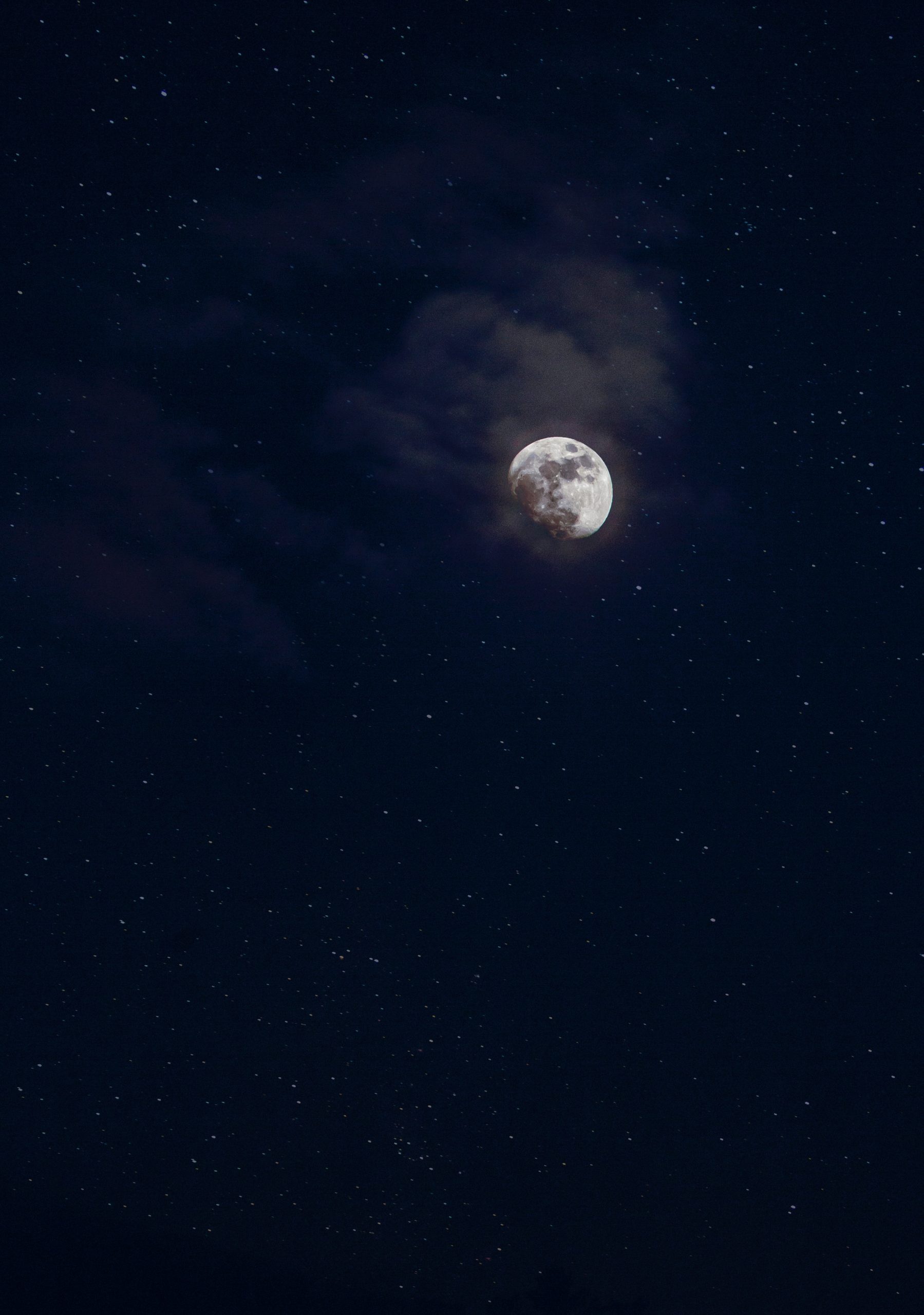
Moon Symbolism in Literature: A Guide to the Mystical and Powerful Representation
MeaningfulMoon
Are you eager to unlock even deeper insights into your destiny? Let the celestial power of the moon guide you on your journey of self-discovery. Click here to get your FREE personalized Moon Reading today and start illuminating your path towards a more meaningful and fulfilling life. Embrace the magic of the moonlight and let it reveal your deepest desires and true potential. Don’t wait any longer – your destiny awaits with this exclusive Moon Reading!
In literature, symbolism plays a crucial role in conveying deeper meanings and enhancing the reader’s understanding and connection to a text. Throughout literary history, one symbol that has emerged as both captivating and mysterious is the moon. The moon’s ethereal beauty, changing phases, and symbolism have made it a powerful motif in literature, representing everything from the passage of time to human emotions and desires. In this blog post, we will explore the various ways in which the moon symbolism has been used in literature, examining its significance in different cultural contexts, and uncovering the timeless allure it holds.
The Moon’s Symbolism Across Cultures
The moon holds great cultural significance in many societies, resulting in a wealth of moon-related symbolism in literature. Let’s explore how this symbolism manifests in different cultures:
Ancient Greek and Roman Mythology
In ancient Greek and Roman mythology, the moon was associated with the goddesses Artemis and Diana, respectively. These deities represented the moon’s feminine qualities such as fertility, nurturing, and intuition. In literature, the moon often symbolized femininity, female power, and the cyclical nature of life.
Chinese and Japanese Culture
In Chinese and Japanese culture, the moon holds deep significance and is intertwined with festivals, folklore, and poetry. In literature from these cultures, the moon symbolizes beauty, tranquility, and the cyclical nature of life. The moon also represents themes of longing, separation, and unrequited love in classic Chinese and Japanese poetry.
European Romanticism
The moon’s symbolism reached new heights during the European Romantic period. Owing to its association with nature and the sublime, the moon often represented the mystery and wonder of the natural world. It also became a powerful symbol of escapism, providing solace and inspiration for writers seeking to break free from the constraints of society.
The Moon as a Reflection of Human Emotions
Beyond its cultural significance, the moon also serves as a mirror for human emotions and experiences. Let’s explore some common emotional themes associated with the moon:
Love and Longing
In literature, the moon is commonly used to symbolize love, desire, and longing. Its beauty and distant presence evoke a sense of unattainable perfection and romantic yearning. Whether it’s a lover pining for a distant partner or a character yearning for unrequited love, the moon becomes a vessel for expressing these deep emotions.
Mystery and Intrigue
The moon’s enigmatic nature has long captivated the human imagination. In literature, the moon often represents mystery, secrecy, and hidden knowledge. It serves as a metaphorical guide through the darkness, revealing hidden truths and leading characters on introspective journeys.
Transformation and Renewal
The moon’s ever-changing phases symbolize the passage of time and the cycle of life. In many literary works, the moon is associated with personal growth, transformation, and rebirth. Characters often undergo significant changes during full moons or find solace and clarity in the moon’s soothing presence.
Iconic Examples of Moon Symbolism in Literature
Countless literary works have embraced the moon’s symbolism in extraordinary ways. Here are a few iconic examples:
| Literary Work | Author | Moon Symbolism |
|---|---|---|
| To Kill a Mockingbird | Harper Lee | The moon symbolizes innocence and purity, contrasting with the inequalities and prejudices depicted in the story. |
| Shakespeare’s Sonnets | William Shakespeare | The moon represents beauty and eternal love, often used in contrast to the speaker’s tumultuous emotions. |
| Midsummer Night’s Dream | William Shakespeare | The moon embodies the transformative power of love and serves as a catalyst for the play’s magical events. |
| The Great Gatsby | F. Scott Fitzgerald | The moon symbolizes the unreachable American Dream and the characters’ unfulfilled desires and illusions. |
The Moon’s Influence on Poetry and Prose
It is in poetry and prose that the moon’s symbolism truly flourishes. The lyrical qualities of these forms of writing allow for a deeper exploration of the moon’s beauty and its impact on human emotions. Countless poets and authors have been inspired by the moon’s allure, crafting enchanting verses and evocative descriptions. From Lord Byron’s romantic odes to Li Bai’s melancholic Chinese poetry, the moon has served as a muse for countless writers throughout the ages.
Furthermore, writers often employ descriptive language and vivid imagery to evoke the moon’s presence in their works. They may describe the moon’s gentle glow casting a silver sheen upon the landscape, or its ethereal light illuminating lovers engaged in midnight rendezvous. Such depictions not only bring the moon to life on the page but also transport readers into the emotional world of the characters and their surroundings.
The Timelessness of Moon Symbolism
As we have explored the diverse cultural significance, emotional resonance, and literary examples of moon symbolism, it becomes clear why this motif has endured throughout centuries of literature. The moon continues to enchant and inspire writers, serving as a versatile symbol for a myriad of themes, from love and longing to mystery and transformation.
Whether you are immersed in Greek tragedies, Japanese poetry, or modern novels, keep an eye on the moon’s presence and symbolism. It will not only enrich your literary experience but also remind you of the timeless connection between nature, human emotions, and the power of symbols in storytelling.
So, the next time you find yourself gazing at the moon, remember the profound symbolism it holds in literature and its ability to illuminate the depths of human experience. Like writers through the ages, allow yourself to be captivated by its magic and let it inspire your own creative endeavors.
Table of Contents
Related posts:
Share the knowledge.
Have you found this article insightful? Chances are, there’s someone else in your circle who could benefit from this information too. Using the share buttons below, you can effortlessly spread the wisdom. Sharing is not just about spreading knowledge, it’s also about helping to make MeaningfulMoon.com a more valuable resource for everyone. Thank you for your support!
- Share on Facebook
- Email this Page
- Share on Reddit
- Share on Tumblr
- Share on WhatsApp
- Share on Viber
- Share on Telegram
- Share on Skype
- Share on LinkedIn
- Share on LINE
- Share on Pinterest
- Share on Pocket
- Share on SMS
Search for creative inspiration
19,902 quotes, descriptions and writing prompts, 4,965 themes
dusk - quotes and descriptions to inspire creative writing
- A cold night
- evening in the city
- sacred night
The dusk comes as a promise of starlight, of those brilliant pearls of the nighttime that sit as if cushioned upon pure black velvet.
Dusk comes to bring us moonlight, to the time of reflection upon the day passed and awaiting day to be renewed by the light of the sun. It is when the birds sing goodnight until the stars bid them to dream under-wing. Each hue deepens in noble solemnity, finding unity in the night.
When the last sun-rays of the day kiss the heathland, when the greens and purples melt into grey under the moonlight, that's when the warren empties and the rabbits are out to forage and play. They move slowly, lolloping in their ungainly way, grazing as they go. At the slightest noise they're up on their hind legs, black eyes staring in more directions than we predator animals can. Sometimes I watch them for a while, just because I need to eat, it doesn't mean I don't appreciate nature. Then I take aim, one bullet, one fat rabbit for stew, job done. They scatter after that and I don't have the patience to stick around for more. Si keeps telling me to set traps instead, but I like my stake-out ritual, and to be honest, knots have never been my thing.
A movement in the shadows has me frozen; it's no more than a rustle but in this failing light my heart is on a hair-trigger. More noise comes. I take a step back and pat my pocket for my flick knife, but every one is flat. I crouch low, my lungs rapidly inflating and deflating with sweet rain-scented air. Minutes pass and what was evening is rapidly becoming the night. Without warning a young rabbit darts from the bushes, it's white under-tail bobbing furiously as it kicks a the springy ground. The rest of his earthen coat just blends into the gloom and in only seconds he is gone, likely already in the warren. I almost laugh, all that for some bunny. I stand, feeling the ache in my legs, stillness and cold are never a good combination.
As the light drains away there is barely enough even for shadows. Whether I like it or not the darkness comes and under it everything in this forest is hidden. Even the stars and moon cower behind a dense layer of cloud, giving the air that tincture I associate with the world before a storm. My ears become sharper and my mind paranoid, every snap of a twig is a predator, even if it is a fawn. For each aroma my brain jumps to the most fearsome thing it could be and my body prepares for flight, fright or freeze. For the most part I just freeze, running will give my position away and I'm not much of a fighter. All I can do is wait while the blackness comes and pray that the dawn is not far behind. So I sit on the damp ground, feeling the frigid water seep into my jeans. My heart can beat all it wants, but this body won't move until daylight breaks through the canopy above. With hands resting in the soil and my back to an oak, I remain, waiting, breathing...
The daylight had dwindled to a barely perceptible lightening of the gloom. Each wall of concrete was identical to the next without an identifying marker of any kind. Standing in what could be any part of the labyrinth, Jasper realized his folly. He had been so certain he could do better than George, that he would be in and out in half a day or less. There was no reason that left would be better than right, or ahead better than doubling back. He considered sitting until the dawn, but who knows what would come when he was made blind by the night.
Dusk comes sooner than expected, the last of the sun's rays cosseted behind soft grey cloud. The street takes on the look of an old photograph, every familiar thing a shade of grey. Slowly the view fades to blackness and the night begins. Carey retreats to the front room to the fire that roars in the hearth, pulling a blanket around her. Aside from Tom leaving his chair to stoke the flames the evening passes in amiable silence, each of them content to hear only the crackle of the fire and each other's steady breathing.
Dusk fades in so slowly that Parsa fails to notice until the path ahead of him is disappearing into darkness. It takes a stumble to rouse him from his carousel of concerns and take in the lack of colour around him.
The trees are crazy silhouettes against a newly silver sky, its blue hue almost gone until dawn. Their branches sway in the wind, creaking into the gusting air. The first sound of the nocturnal animals comes, a hoot of an owl, a rabbit taking cover in the hedgerow.
When the lake is a mirror for the full moon and the trees have hidden their bold greens, its time to move into the shadowless world. The cars still drone on the highway, a never ending stream of white and red lights, but the countryside harbours only us in sombre clothes and soft shoes.
Tara, finding momentary peace in a trance, watched the rain-drops on the window, allowing the sound to massage her mind. Time passed, enough to steal the last fragments of the daytime and welcome the night.
Sign in or sign up for Descriptionar i
Sign up for descriptionar i, recover your descriptionar i password.
Keep track of your favorite writers on Descriptionari
We won't spam your account. Set your permissions during sign up or at any time afterward.

Writing Nestling
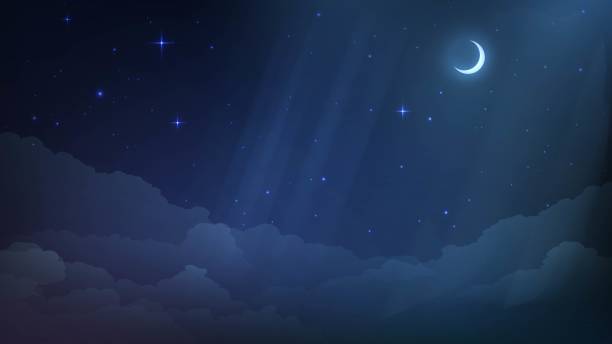
How To Describe Night In Writing (For Beginners- 2024)
Table of Contents
How To Describe Night In Writing
How To Describe Night In Writing: In the realm of storytelling, the night is a canvas painted with shades of mystery, romance, and introspection.
Capturing the essence of the nocturnal world through the art of description is a literary endeavor that transcends mere depiction; it is an invitation for readers to immerse themselves in the atmospheric allure of darkness.
Describing night in writing goes beyond the absence of daylight; it delves into the profound symbolism, sensory intricacies, and emotional nuances that unfold when the sun sets.
In this exploration, we embark on a journey to unravel the techniques that transform night into a compelling character, shaping narratives with the subtle strokes of descriptive language, symbolism, and the evolving atmosphere.
Join the nocturnal odyssey as we delve into the artistry of portraying the night in all its enigmatic splendor.
Describing night in writing involves capturing the sensory elements and creating a vivid atmosphere. Here’s a step-by-step process on How To Describe Night In Writing:
Observe the Setting
Start by observing the night setting you want to describe. Note the surroundings, the moon’s phase, stars, and any unique features.
Identify Key Senses
Consider the senses you want to emphasize – sight, sound, smell, touch. Night descriptions often involve darkness, subtle lighting, cool temperatures, and distinct sounds.
Focus on Visuals
Begin with visual details. Describe the moon, its glow, or lack thereof. Note any shadows, silhouettes, or shimmering lights. Paint a picture of the sky , stars, and the overall atmosphere.
Play with Colors
Utilize color imagery to evoke emotions. Describe the night sky as inky black, navy blue, or velvety indigo. Highlight any splashes of color from celestial bodies or artificial lights.
Capture Sounds
Move on to auditory details. Highlight the quietness, distant sounds like rustling leaves or nocturnal creatures, or urban noises. Use onomatopoeic words to enhance the auditory experience.
Incorporate Smells
Explore olfactory elements, if applicable. Mention scents carried by the night breeze, such as earthiness, floral fragrances, or even distant cooking smells.
Describe Temperature
Discuss the temperature of the night. Is it crisp and cool, or muggy and warm? Convey the sensation of the air on the skin to immerse the reader in the setting.
Use Metaphors and Similes
Enrich your description with metaphors and similes. Compare the night to something familiar or use figurative language to evoke a specific mood or feeling.
Consider the Setting’s Influence
Reflect on how the night setting influences the mood or actions of characters, if applicable. A moonlit night might create a romantic atmosphere, while a dark and stormy night might evoke tension.
Craft a Seamless Narrative
Weave these elements into your narrative seamlessly. Avoid overwhelming the reader with too many details at once, and ensure your descriptions serve the overall tone and theme of your writing .
Remember, the key is to engage the reader’s senses and emotions, allowing them to experience the night through your words.
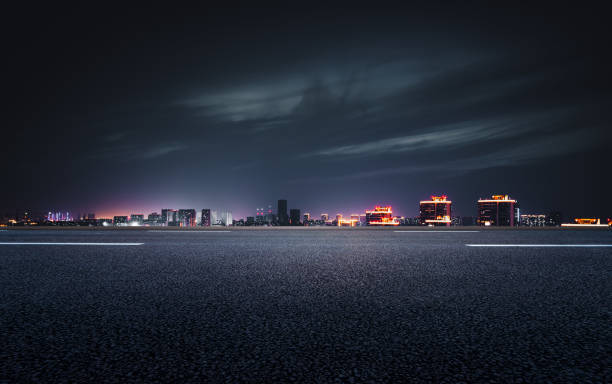
Setting the Scene
As the sun dipped below the horizon, the world underwent a transformative dance, shrouding itself in the mystique of the night.
The landscape, once awash in the golden hues of daylight, succumbed to the velvet embrace of darkness. The moon, a silent maestro, cast its silvery glow upon the earth, conjuring a dreamscape where reality and imagination intertwined.
Shadows, like enigmatic dancers, pirouetted across the canvas of the night, tracing the contours of hidden secrets.
The air, now a symphony of nocturnal whispers, held the promise of undiscovered tales waiting to unfold. In this nocturnal theater, time itself seemed to stretch and contract, creating a liminal space where the extraordinary became plausible, and the ordinary, extraordinary.
Establishing the time and place
As the clock’s hands embraced the midnight hour, the world hushed into a stillness reserved exclusively for the nocturnal.
The setting, a quaint hamlet nestled between ancient hills and sleepy meadows, wore the moonlight like a silken cloak.
The air, crisp and cool, bore the distinctive fragrance of dew-kissed grass. The village, steeped in a timeless charm, echoed with the distant murmurings of a nearby stream.
The rhythmic cadence of crickets underscored the unfolding night, orchestrating the passage of time with their unseen serenade.
This was not just a specific moment; it was a temporal crossroads where the magic of night met the tangible reality of a place suspended in its own enchantment.
Sensory Imagery
As the inky night unfurled its obsidian wings, the world transformed into a sensory symphony, weaving a tapestry of sensations that transcended the mundane.
Moonbeams, like liquid silver, painted a celestial mural overhead, casting a spell that danced upon the eyes. The night air, cool and velvety, carried with it the whispers of secrets, an olfactory sonnet that blended the earthy perfume of soil with the ethereal fragrance of blooming night flowers.
Each step on the nocturnal path was a tactile exploration, the ground yielding with a gentle sigh as if sharing the stories it cradled.
The orchestration of nocturnal creatures, from the haunting calls of distant owls to the rustle of unseen critters, resonated through the bones, a harmonic convergence of nature’s nocturnal opera.
In this symphony of the senses, the night unfolded not just as an absence of light but as a rich, multi-dimensional experience where every perception became a brushstroke in the masterpiece of the moonlit hours.
Visual Descriptions
Under the night’s cosmic theatre, visual poetry unfolded with the grace of a celestial ballet. The moon, a luminescent guardian, painted the world in silver strokes, casting enchanting shadows that waltzed with the slightest breeze.
Stars, like diamonds strewn across a velvet canvas, sparkled with ethereal brilliance, their patterns telling ancient tales written in constellations.
Wisps of clouds, veiled in obsidian mystery, traversed the heavens like spectral dancers in an ever-changing choreography.
The landscape below, bathed in the soft glow of lunar radiance, revealed hidden details – the glistening dew on blades of grass, the reflective eyes of nocturnal creatures, and the stoic silhouettes of towering trees.
In the quietude of the night, the visual tapestry unfolded, inviting the observer to lose themselves in the mesmerizing spectacle of shadows and silvery luminescence, where reality and dreams coalesced in a nocturnal embrace.
Emotional Atmosphere
In the tender cradle of night, emotions swirled like phantom dancers, casting their spell on the tapestry of darkness.
The moon, a silent confidante, witnessed the kaleidoscope of feelings that emerged beneath its gentle gaze. The night, a canvas for the soul’s expression, wore the cloak of mystery with grace.
It was not merely the absence of daylight; it was a sanctuary for introspection, a refuge for the introspective minds to delve into the depths of their own emotions.
Loneliness, tinged with the sweet melancholy of solitude, coexisted with the thrill of nocturnal secrets waiting to be unraveled.
Serenity intertwined with a quiet chaos, and the night became an emotional alchemy, where each heartbeat echoed against the velvet sky, composing a nocturne of emotions that spoke to the very core of the human experience.

Creating a mood through word choice and tone
In the realm of night, the power of language becomes a magicians’ wand, conjuring moods that dance on the precipice of enchantment.
Words, carefully selected, cast a spell that transcends mere description, immersing the reader in the emotive chiaroscuro of the nocturnal canvas.
The tone, a maestro orchestrating the symphony of emotions, guides the reader through the moonlit corridors of anticipation, weaving a tapestry where each adjective is a brushstroke, and every sentence a musical note.
The night, draped in an opulent lexicon, can be a sultry seductress or a solemn sage, depending on the alchemy of word choice and tone.
It is the subtle interplay of consonants and vowels that transforms the mundane into the extraordinary, painting the atmosphere with hues of mystery, serenity, or palpable tension.
As the words unfurl like tendrils of mist in the midnight air, they invite the reader to not just witness the night but to feel its pulse, creating an immersive experience where language becomes a vessel for the soul of the nocturnal.
Symbolism and Metaphor
In the nocturnal tapestry, the interplay of symbols and metaphors is a celestial ballet, where the ordinary becomes a constellation of hidden meanings.
The moon, a metaphorical lantern in the cosmic dark, doesn’t merely illuminate; it becomes a silent confidante, casting shadows that dance like metaphorical whispers of ancient tales.
Stars, those celestial hieroglyphs, inscribe a narrative on the vast scroll of the night sky, each one a metaphorical punctuation mark in the poetry of existence.
The night itself, a canvas for dreams, is a metaphorical cocoon where reality transforms into the ephemeral butterfly of imagination.
In this nocturnal sanctuary, every rustle of leaves and every gust of wind is laden with symbolic resonance, turning the act of perception into an intricate dance with the metaphysical.
The symbols and metaphors, like cosmic breadcrumbs, invite the reader to embark on a journey through the labyrinth of meaning, where the night becomes a canvas for the reader’s own introspective exploration.
Using night as a symbolic element
The night, a ubiquitous yet enigmatic character in the narrative of existence, dons the cloak of symbolism, transcending its physical realm to become a metaphorical maestro orchestrating the symphony of deeper meanings.
It is the cosmic chalice of mysteries, where darkness isn’t merely the absence of light but a metaphor for the uncharted territories of the human psyche.
The nocturnal hours become a symbolic canvas, painting the complexities of life, where shadows aren’t just absence but embodiments of hidden truths.
The moon, a luminary sentinel in the night, becomes a symbol of cyclical renewal and eternal rhythms. The stars, like distant dreams, twinkle as symbolic aspirations in the vast tapestry of the universe.
Night, as a symbolic element, beckons the reader to delve beyond the surface, inviting contemplation on the dualities of life, the veiled beauty in obscurity, and the profound symbolism that weaves through the celestial fabric of existence.
Character Interaction with the Night
Beneath the cosmic theater of the night, characters don’t merely exist; they are alchemists, concocting elixirs of emotion in the moonlit crucible.
Each step is a dance with shadows, and every heartbeat resonates with the nocturnal symphony. The night is not a backdrop but a silent confidante, witnessing the whispered secrets and unspoken fears that characters dare not reveal in the harsh light of day.
Whether it’s the protagonist seeking solace in the velvet embrace of darkness or the antagonist cloaked in the ambiguity of shadows, the night becomes an intimate accomplice to their innermost struggles.
The stars are not just celestial bystanders; they are the audience to the characters’ silent soliloquies, while the moon, a cosmic mirror, reflects the myriad emotions etched across their faces.
In the nocturnal ballet, characters don’t navigate the night; they immerse themselves in its depths, each interaction a delicate choreography that leaves an indelible mark on the canvas of their existence.
Integrating characters into the nighttime setting
As the sun’s radiance retreated, characters became interwoven threads in the intricate fabric of the nocturnal tapestry.
Their silhouettes, framed against the indigo backdrop, carried the weight of both secrets and vulnerabilities. Nighttime was not just a setting; it was a companion to their solitude, a confidant to their whispered hopes and fears.
Each footfall on the dew-kissed ground echoed the cadence of their journey, and every stolen glance beneath the moonlight held the promise of clandestine revelations.
The characters weren’t mere spectators to the night; they were active participants, navigating the shadows with a nuanced dance of emotions.
Whether driven by the pursuit of elusive dreams or haunted by the specters of the past, the night embraced them in its inky bosom, revealing facets of their personalities that daylight dared not expose.
In this symbiotic relationship between characters and the nighttime setting, the narrative unfolded as a nocturnal odyssey, where the darkness became both a sanctuary and a crucible, shaping the characters in its mysterious forge.
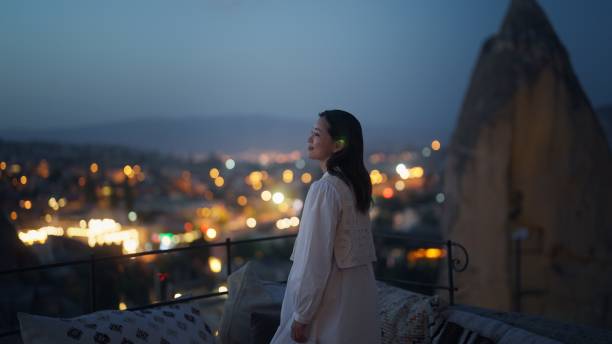
Narrative Techniques
In the nocturnal realm where stories unfold like constellations in the cosmic tapestry, narrative techniques are the alchemical spells that transform mere words into ethereal experiences.
The prose, a celestial navigator, charts a course through the vast sea of night, employing metaphors as North Stars and similes as guiding constellations.
Pacing, like a heartbeat echoing through the narrative, quickens in suspenseful crescendos and mellows in contemplative interludes, orchestrating a symphony of emotions.
Sentence structures are not mere grammatical constructs; they are architectural marvels, crafting moonlit archways through which readers traverse the labyrinth of the plot.
Flashbacks become time-traveling portals, allowing characters to dance between the past and present in a waltz of memory.
In this literary cosmos, the interplay of narrative techniques is not just a means of storytelling; it is the very essence of the night, where the language becomes a celestial chariot propelling readers into the uncharted realms of imagination.
Employing descriptive language and literary devices
In the realm of night, descriptive language and literary devices unfurl like the tendrils of ivy, embracing the reader in a tapestry of vivid imagery and emotive resonance.
Words aren’t mere vessels of meaning; they are alchemical agents that transmute the mundane into the magical. Metaphors, like fireflies, dance in the velvety prose, casting a soft glow on the intricacies of the night.
Similes are celestial bridges connecting the familiar to the fantastical, while personification breathes life into the silent whispers of the nocturnal breeze.
Descriptive language, akin to a painter’s brush, strokes the canvas of the narrative with hues of emotion, detailing the contours of moonlit landscapes and the ephemeral beauty of night creatures.
Each adjective is a palette choice, each adverb a nuanced brushstroke, and every literary device a finely tuned instrument in the symphony of storytelling.
In this celestial dance of language, the night becomes not just a setting but an immersive experience, where the reader doesn’t observe but tangibly feels the magic woven into the very fabric of the prose.
Evolving Atmosphere
As the night unfolded its wings, the atmosphere morphed into a living entity, a chameleon that embraced metamorphosis with each passing moment. Moonlight, initially a shy whisper, transformed into a luminous ballad, its glow waxing and waning in a celestial rhythm.
Stars, like shy spectators, blinked in and out, altering the cosmic audience’s intensity. The air, once a still canvas, began to shiver with the nocturnal secrets it harbored, as if the very breath of the night held tales waiting to exhale.
Clouds, nomadic wanderers in the sky’s expanse, choreographed a dance that veiled and unveiled the moon’s luminous countenance.
The evolving atmosphere wasn’t just a backdrop; it was a character in its own right, an unseen force sculpting the narrative with the subtle touch of a cosmic artisan.
In the ever-shifting nocturnal tableau, the atmosphere became a silent storyteller, etching its own verses into the fabric of the night.
Describing the progression of the night
As the night unfolded its mysterious manuscript, it embarked on a poetic journey of progression, a narrative written in the ink of shadows and stardust.
The twilight’s last sigh marked the inception, a transitional phase where the sky, a canvas in transition, surrendered its vibrant hues to the encroaching darkness.
The initial hush of nocturnal awakening resonated through the air, a prelude to the symphony of crickets and night creatures tuning their instruments.
With the ascent of the moon, the narrative gained momentum, casting a silver glow on the evolving landscape.
Stars, like punctuation marks, appeared one by one, illuminating the cosmic syntax of the night. The zenith of the night unveiled a panorama of celestial wonders, each passing hour etching its own stanza in the celestial sonnet.
The descent toward dawn became a gradual unveiling, a reverse metamorphosis where shadows relinquished their hold, and the world emerged from the cocoon of darkness into the tentative embrace of a new day.
In this chronological dance, the progression of the night became a temporal tapestry, weaving the reader through the ebb and flow of nocturnal wonders.
Frequently Asked Questions about How To Describe Night In Writing
What elements should i focus on when describing night in writing.
When describing night, pay attention to visual details such as the moon, stars, and shadows. Explore auditory elements like sounds in the night, consider the temperature, and incorporate sensory experiences like smells and touch.
How can I effectively convey the visual aspects of the night in my writing?
Use vivid imagery to depict the night sky, emphasizing the moon’s glow, star patterns, and the overall atmosphere. Experiment with colors like inky black, navy blue, or velvety indigo to evoke the mood of the night.
What role do sounds play in creating a night scene?
Sounds are crucial in conveying the ambiance of the night. Describe quietness, distant rustles, nocturnal creature noises, or urban sounds. Consider using onomatopoeic words to enhance the auditory experience.
Should I include smells when describing a night setting?
Including smells can add depth to your description. Consider scents carried by the night breeze, such as earthiness, floral fragrances, or distant cooking smells, to enhance the reader’s sensory experience.
How do I capture the temperature of the night in my writing?
Describe the temperature by conveying whether the night is crisp and cool, muggy and warm, or somewhere in between. Discuss the sensation of the air on the skin to immerse the reader in the setting.
Can I use metaphors and similes to enhance my description of the night?
Absolutely! Metaphors and similes can enrich your writing. Compare the night to something familiar or use figurative language to evoke specific moods or feelings associated with the night.
How do I avoid overwhelming the reader with night descriptions?
Craft a seamless narrative by introducing details gradually. Ensure your descriptions serve the overall tone and theme of your writing, and avoid overcrowding your prose with too many details at once.
How can I make the night setting influence the overall mood of my writing?
Reflect on how the night setting influences the characters or the atmosphere. For instance, a moonlit night might create a romantic ambiance, while a dark and stormy night could evoke tension or suspense in your narrative.
In conclusion of How To Describe Night In Writing , describing night in writing is an art that engages the reader’s senses and emotions to create a vivid and immersive experience.
By focusing on visual elements such as the moon and stars, incorporating auditory details like distant sounds, exploring smells carried by the night breeze, and conveying the temperature, writers can paint a rich and atmospheric picture of the night.
Utilizing metaphors, similes, and careful narrative crafting allows for a seamless integration of these elements, enhancing the overall mood of the writing.
Remember, the beauty of describing night lies in the delicate balance of details that transport the reader into the enchanting realm of darkness, making it a compelling and memorable aspect of any narrative.
Related Posts:
- How To Describe Moon In Creative Writing (10 Best…
- How To Describe Stars In Writing Poetically (10 Best Tips)
- How to Describe a Magical Forest (10 Effective Tips)
- How To Describe A Sunset In Writing (Words, Phrases…
- How To Write A Prologue For A Romance Novel (10 Best Tips)
How To Describe A Dress In Writing (10 Best Tips)
Similar posts.

How To Describe A Kitchen In Writing (11 Best Tips)
How To Describe A Kitchen In Writing How To Describe A Kitchen In Writing: Embarking on the journey to describe a kitchen in writing is akin to wielding a literary palette, where words become strokes and sentences form the vivid tapestry of culinary landscapes. Beyond the mere arrangement of appliances and the selection of colors,…
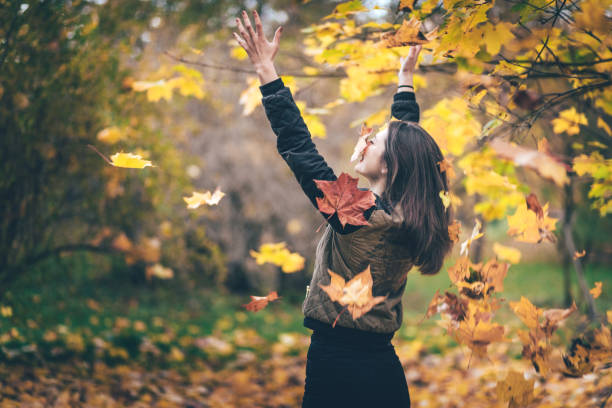
How To Describe Autumn Season In Writing (11 Steps, Quotes & Words)
How To Describe Autumn Season In Writing How To Describe Autumn Season In Writing: Welcome to the art of capturing the vivid essence of autumn with the stroke of your pen and the magic of your words. The autumn season, with its rich tapestry of colors, crisp air, and the subtle symphony of falling leaves,…

How To Describe A Worried Face In Writing (10 Best Tips)
How To Describe A Worried Face In Writing How To Describe A Worried Face In Writing: In the world of storytelling, the ability to vividly describe emotions is the key to unlocking the hearts and minds of readers. And at the heart of these emotional landscapes lies the worried face, a canvas onto which writers…
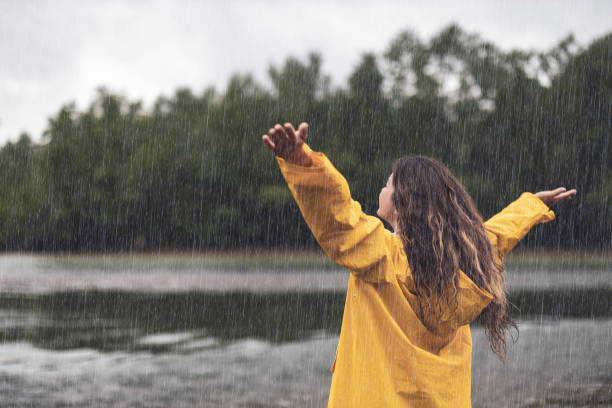
How To Describe Rain In Writing (In A Poetic Way- 2024)
How To Describe Rain In Writing How To Describe Rain In Writing: Describing rain in writing is akin to capturing the essence of a timeless and ever-evocative phenomenon that has fascinated poets, novelists, and storytellers for centuries. Rain, in its many forms and moods, can be a powerful narrative device, setting the stage, conveying emotions,…

How To Describe A Dress In Writing How To Describe A Dress In Writing: In the intricate tapestry of fashion literature, the art of describing a dress transcends the mere portrayal of fabric and design—it is a nuanced and evocative endeavor that invites readers to step into a world where words become threads weaving through…
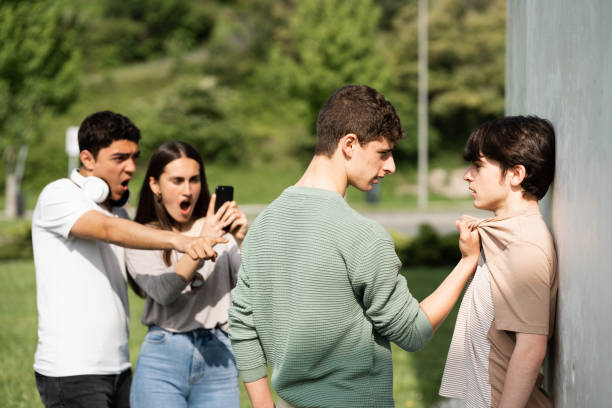
How To Describe Fight Scenes In Writing (14 Best Tips)
How To Describe Fight Scenes In Writing How To Describe Fight Scenes In Writing: Describing fight scenes in writing is an art form that transcends the mere clash of swords or fists; it is the alchemical fusion of words that can electrify the imagination and captivate the reader’s senses. Whether it’s the heart-pounding duel of…
Is MasterClass right for me?
Take this quiz to find out.
Sensory Imagery in Creative Writing: Types, Examples, and Writing Tips
Written by MasterClass
Last updated: Sep 29, 2021 • 6 min read
Sensory imagery is a literary device writers employ to engage a reader’s mind on multiple levels. Sensory imagery explores the five human senses: sight, sound, taste, touch, and smell.
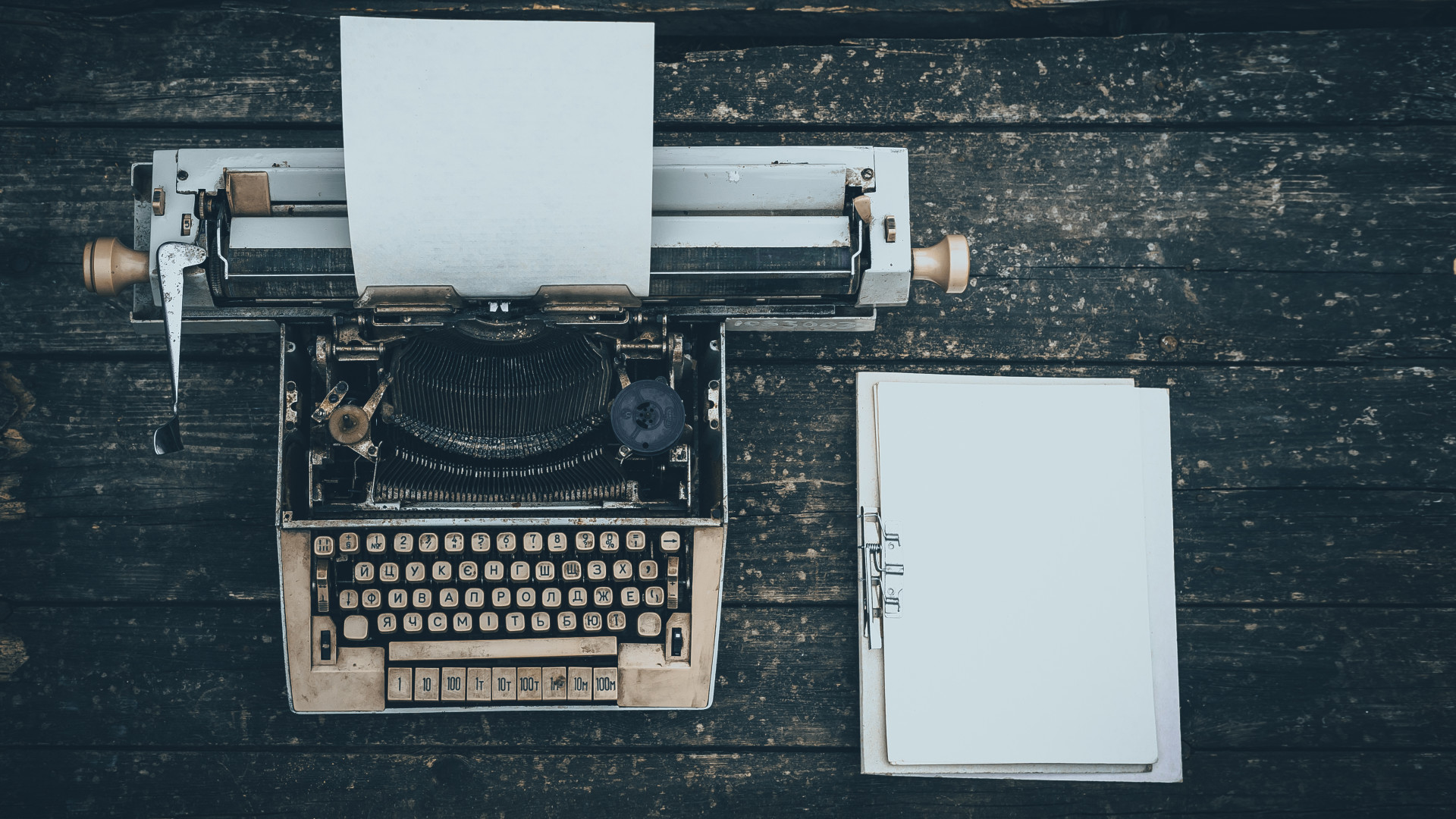
The Enlightened Mindset
Exploring the World of Knowledge and Understanding
Welcome to the world's first fully AI generated website!
Describing Night Time Creative Writing: Tips and Examples

By Happy Sharer

Introduction
Writing about night time can be a challenge. It’s easy to rely on clichés or overused phrases, but if you want to create something truly special, you need to find a way to evoke emotion and capture the beauty of the night in words. In this article, we’ll explore ways to describe night time creative writing, from using descriptive language to create an image of the night, to painting a picture of a moonlit night through sensory language, to exploring the mystery of the night through dialogue.
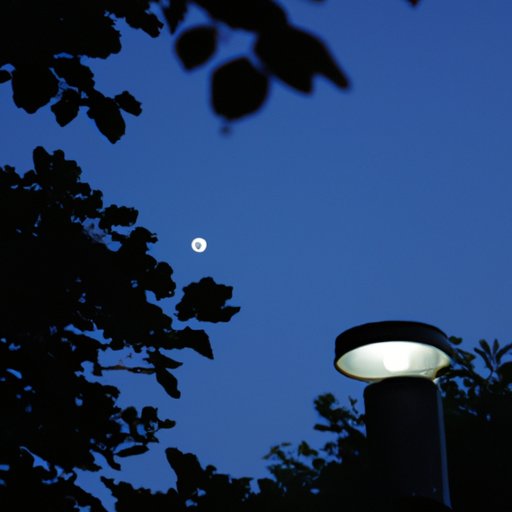
Describe the Setting of a Summer Night in Detail
The first step in describing a night scene is to use descriptive language to create an image of the night. Think about the features of a summer night – the temperature, the smells, the sounds – and try to capture them in your writing. You could describe the warmth of the air, the smell of freshly cut grass, or the sound of crickets chirping in the distance. The more detailed and specific you are, the better.
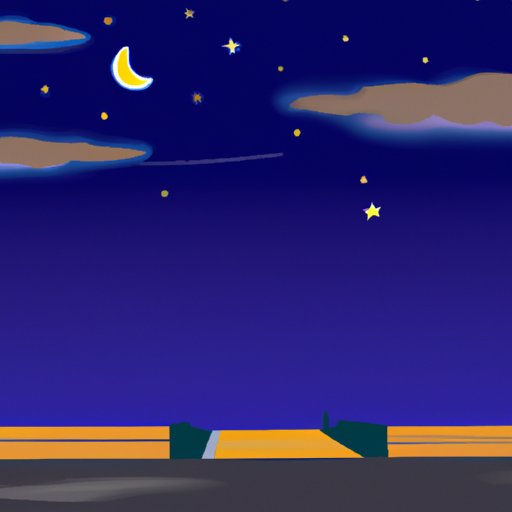
Use Metaphors to Evoke Emotion when Describing the Night Sky
Metaphors are a great way to evoke emotion when describing the night sky. For example, you could say that the stars are “diamonds in the sky” or that the moon is a “lonely sentinel”. These metaphors help to create a mood and make the night sky come alive in the reader’s mind.
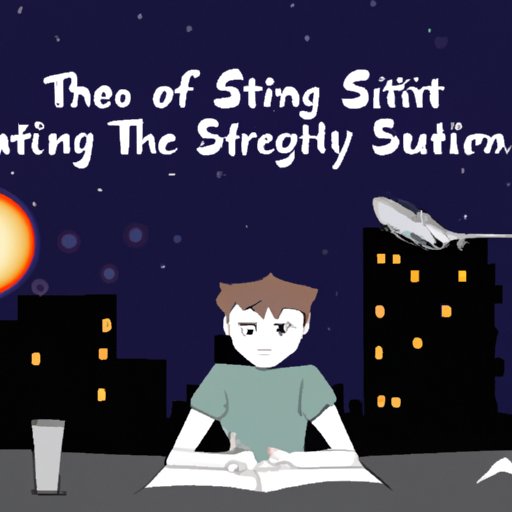
Create a Character and Write a Story Set Around Their Experience of the Night
Another way to bring the night alive is to create a character and write a story set around their experience of the night. When creating your character, think about their background, their personality, and their goals. Then, as you write the story, focus on how the character interacts with the night – what do they see, hear, feel? How does the night affect them emotionally? This will help to bring the night alive in your writing.
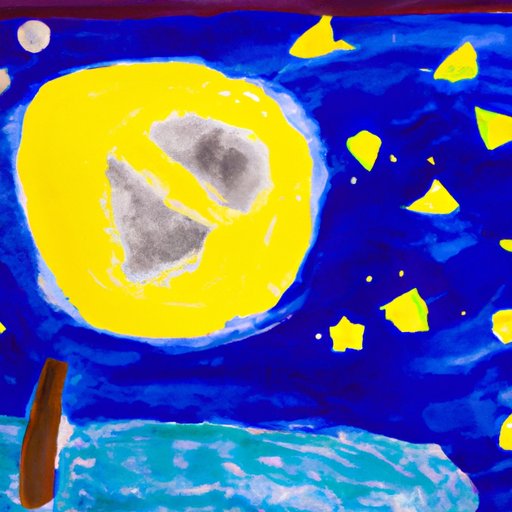
Paint a Picture of a Moonlit Night Through Sensory Language
Sensory language is another powerful tool for capturing the beauty of the night. Use words that evoke sight, sound, smell, taste, and touch to help readers imagine what it’s like to be in the middle of a moonlit night. You could describe the silver light of the moon, the rustle of leaves in the wind, the sweet scent of jasmine, or the coolness of the night air. All of these details will help to paint a vivid picture of the night.
Explore the Mystery of the Night Through Dialogue
Dialogue is a great way to explore the mystery of the night. You can use conversations between characters to hint at secrets and explore themes such as fear, loneliness, and the unknown. Try to keep the dialogue natural and realistic, so that the reader feels like they’re eavesdropping on a real conversation. This will help to create an atmosphere of suspense and intrigue.
Discuss the Symbolism of Night in Literature
The symbolism of night has been used in literature for centuries. From Shakespeare’s “To be or not to be” soliloquy in Hamlet, to Emily Bronte’s description of the moors in Wuthering Heights, authors have used the darkness of the night to explore themes such as death, loss, and rebirth. By drawing on these literary works, you can add depth and meaning to your own writing.
Write a Poem about the Beauty of the Night
Finally, why not try your hand at writing a poem about the beauty of the night? Writing a poem is a great way to capture the beauty and mystery of the night in a few short lines. Start by thinking of a few words or images that evoke the night, then use those words to create a poetic piece that expresses your feelings about the night. You could also look at examples of existing poems to get some inspiration, such as Robert Frost’s “Stopping by Woods on a Snowy Evening” or William Wordsworth’s “The World Is Too Much With Us”.
Writing about night time can be tricky, but with the right approach, it can also be incredibly rewarding. In this article, we’ve explored ways to describe night time creative writing, from using descriptive language to create an image of the night, to painting a picture of a moonlit night through sensory language, to exploring the mystery of the night through dialogue. We’ve also discussed the symbolism of night in literature and offered tips on how to write a poem about the beauty of the night. With these tips and examples, you should now have the confidence to tackle any creative writing project involving night time.
(Note: Is this article not meeting your expectations? Do you have knowledge or insights to share? Unlock new opportunities and expand your reach by joining our authors team. Click Registration to join us and share your expertise with our readers.)
Hi, I'm Happy Sharer and I love sharing interesting and useful knowledge with others. I have a passion for learning and enjoy explaining complex concepts in a simple way.
Related Post
Unlocking creativity: a guide to making creative content for instagram, embracing the future: the revolutionary impact of digital health innovation, the comprehensive guide to leadership consulting: enhancing organizational performance and growth, leave a reply cancel reply.
Your email address will not be published. Required fields are marked *
Expert Guide: Removing Gel Nail Polish at Home Safely
Trading crypto in bull and bear markets: a comprehensive examination of the differences, making croatia travel arrangements, make their day extra special: celebrate with a customized cake.
20+ Best Words to Describe Moonlight, Adjectives for Moonlight
Moonlight, in its simplest form, refers to the soft and gentle light that radiates from the moon during the night. This ethereal glow has captivated human hearts since time immemorial, inspiring poets, writers, and artists to weave tales of its enchanting beauty. Words often fall short in capturing the true essence of moonlight, but a few come close to conveying its mesmerizing charm. In this blog post, we embark on a poetic journey to explore words that best describe the spellbinding allure of moonlight.
Adjectives for Moonlight
Here are the 20 Most Popular adjectives for moonlight:
- Captivating
- Illuminating
Words to Describe Moonlight with Meanings
- Alluring : Highly attractive and charming.
- Bewitching : Enchanting and captivating in a mysterious way.
- Captivating : Holding one’s attention with fascination.
- Dreamy : Having a hazy, romantic quality.
- Enchanting : Delightfully charming and magical.
- Gentle : Soft and soothing in nature.
- Illuminating : Providing light and understanding.
- Luminous : Emitting a radiant glow or light.
- Magical : Possessing enchanting or supernatural qualities.
- Mystical : Relating to spiritual or mysterious experiences.
- Pearly : Resembling or having the luster of pearls.
- Radiant : Emitting brightness and warmth.
- Serene : Calm and tranquil in appearance or atmosphere.
- Silvery : Having the shine or color of silver.
- Soft : Gentle and tender in nature.
- Tranquil : Peaceful and serene.
- Unearthly : Otherworldly or supernatural in character.
- Velvety : Soft, smooth, and luxurious in texture.
- Whimsical : Playfully quaint and imaginative.
- Wistful : Longing and thoughtful in a melancholic way.
Example Sentences for Moonlight Adjectives
- The alluring moonlight invited us to dance.
- The forest was bathed in bewitching moonlight.
- The storyteller’s words were captivating under the moonlight.
- They strolled hand in hand, enjoying the dreamy moonlight.
- The castle looked enchanting in the moonlight’s glow.
- The gentle moonlight caressed the sleeping world.
- The stars shone brightly in the illuminating moonlight.
- The lake’s surface shimmered with luminous moonlight.
- They believed in the magical powers of moonlight.
- The ancient ruins had an air of mystical moonlight.
- Her smile sparkled like pearly moonlight.
- The radiant moonlight guided their path home.
- The serene scene calmed their troubled minds.
- The ocean reflected the silvery moonlight’s brilliance.
- The child fell asleep to the soft moonlight.
- The tranquil garden was a place of peace.
- The strange sound had an unearthly moonlit origin.
- The flowers had a velvety glow in the moonlight.
- The artist’s mind was full of whimsical moonlit visions.
- As the music played, she felt wistful under the moonlight.
Explore More Words:
Words to Describe a Moon
Words to Describe Night Sky
Words to Describe Stars
How to describe moonlight in writing?
Moonlight in writing can be described as a captivating, ethereal glow that bathes the surroundings in a soft and mystical light.
What is an adjective sentence for moon?
The moonlit night cast a serene and enchanting ambiance on the landscape.
Is moonlight a noun or adjective?
Moonlight is a noun that refers to the soft and gentle light emitted by the moon during the night.
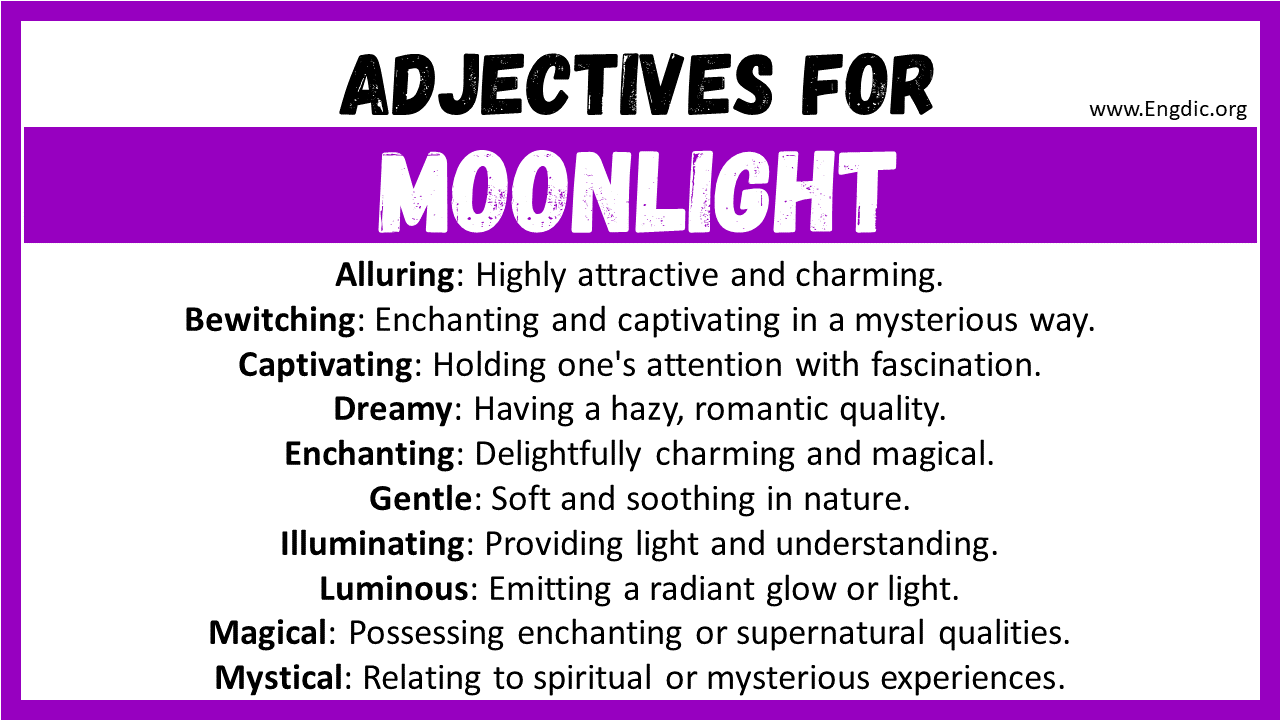
Related Posts
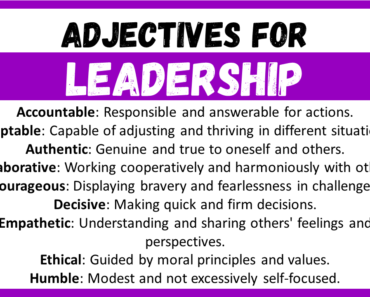
20+ Best Words to Describe Leadership, Adjectives for Leadership
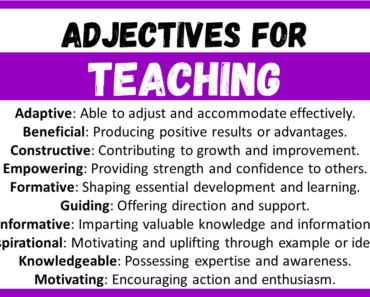
20+ Best Words to Describe Teaching, Adjectives for Teaching
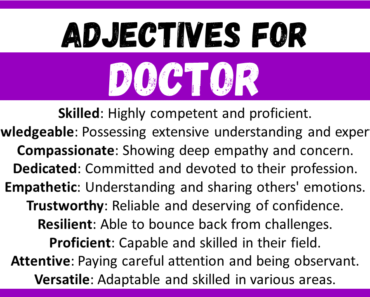
20+ Best Words to Describe Doctor, Adjectives for Doctor
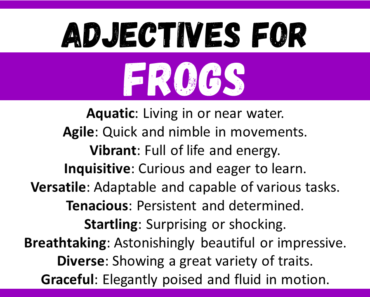
20+ Best Words to Describe Frogs, Adjectives for Frogs
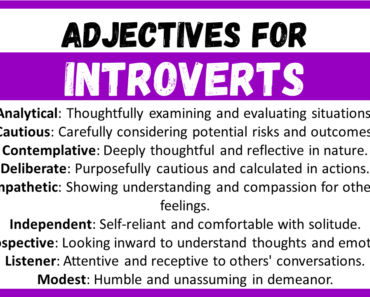
20+ Best Words to Describe Introverts, Adjectives for Introverts
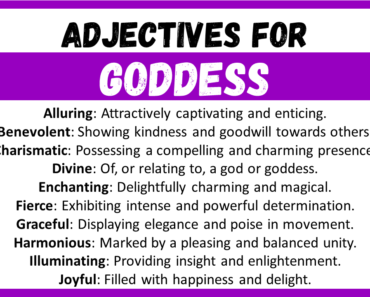
20+ Best Words to Describe Goddess, Adjectives for Goddess
About the author.
Hi, I'm USMI, engdic.org's Author & Lifestyle Linguist. My decade-long journey in language and lifestyle curation fuels my passion for weaving words into everyday life. Join me in exploring the dynamic interplay between English and our diverse lifestyles. Dive into my latest insights, where language enriches every aspect of living.

How to Describe a Sunset in Writing: 100 Best Words & Phrases
The dazzling spectacle of a sunset is a feast for the senses. Capturing this phenomenon in words, however, can feel impossible.
Here’s how to describe a sunset in writing:
Describe a sunset in writing by using vivid words like “radiant” and “luminous,” phrases like “a dance of light before evening,” metaphors like “the sunset was a pyre,” and carefully crafted descriptions that reflect character emotions, moods, or circumstances. Avoid cliches and over description.
In this guide, you’ll learn everything you need to know about how to describe a sunset in writing.
Words to Describe a Sunset

Table of Contents
Descriptive words are the building blocks of compelling narratives.
Here are illustrative terms to breathe life into your sunset depictions:
- Kaleidoscopic – Perfect for describing the changing pattern of colors.
- Luminous – To express the radiant light emitted by the setting sun.
- Crimson – To depict the deep, rich red color in the sunset sky.
- Glowing – Ideal for the warm radiance that engulfs the sky.
- Hazy – Useful for slight obscurity or softness to the sunset.
- Dusky – Describes the darker phase of sunset or twilight.
- Silhouetted – To depict objects as dark shapes against the bright sunset sky.
- Molten – To suggest the sky melting into stunning warm hues.
- Smoldering – For a sunset that seems to burn with low or suppressed light.
- Twilight – The period of diminished light after the sun has set.
- Amber – Describes the beautiful orange-yellow hue often seen at sunset.
- Radiant – Expresses a brilliant, glowing sunset.
- Translucent – For describing the effect of light filtering through the clouds.
- Pastel – Can depict softer, lighter colors in the sky.
- Vibrant – For describing a bright, intense sunset.
- Iridescent: Suggesting a display of lustrous, changing colors.
- Dappled: To describe light with spots or patches of color.
- Opalescent: Useful when the sunset colors shine and change color like an opal.
- Inky: Depicting deep, dark blues of a late sunset.
- Pearlescent: For a soft, glowing light with a slightly pinkish hue.
- Ethereal: To illustrate a sunset that is delicately beautiful.
- Gilded: Ideal for describing a scene touched with golden light.
- Velvety: To describe the soft, soothing colors of the twilight sky.
- Incandescent: To portray intense, bright light.
- Misty: Useful when a fine spray or light fog mutes the sunset’s glow.
- Resplendent: To depict a brilliantly shining sunset.
- Fiery: Perfect for illustrating a bold, bright, burning sunset.
- Azure: Describes the rich, blue sky against a setting sun.
- Fading: To express the gradual disappearance of sunlight.
- Majestic: For portraying a sunset of grandeur and beauty.
Phrases to Describe a Sunset
Phrases can encapsulate the atmosphere and allure of a sunset. Here are 15 expressions to embody the sunset’s charm:
- A cascade of colors showering the sky
- The sun bidding adieu to the day
- A symphony of hues painting the evening
- The sky set ablaze in the evening’s grandeur
- A mosaic of fiery oranges and purples
- Shadows creeping in as daylight recedes
- A melting pot of golds and reds
- The day dissolving into a soft, dreamy twilight
- The horizon set on fire by the departing sun
- A pastel wash over the canvas of the sky
- The sun descending into a sea of gold
- A display of colors dancing across the celestial stage
- The evening donned its twilight robe
- The dying day whispering its goodbye in hues of red
- The sunset, a beacon guiding the night
- The sky, a spill of molten gold
- A dance of light before the evening’s curtain call
- A canvas brushed with fiery strokes
- Colors woven into the day’s farewell song
- The sun melting into the horizon’s embrace
- Shadows lengthening beneath the twilight’s glow
- Daylight’s last sigh setting the sky aflame
- A riot of colors saluting the departing sun
- The sun, swallowed by the thirsty horizon
- A spectacle of hues melting into dusk
- The sunset weaving a tapestry of twilight
- Colors bleeding into the dusk’s blank canvas
- The sunset spilling its radiant potion into the evening
- Day’s candle snuffed out by the twilight
- The sunset, an ethereal lullaby coaxing the day to sleep
Metaphors to Describe Sunsets
Metaphors allow a creative approach to describing a sunset.
Here are metaphors to inspire you:
- The sunset was an artist’s palette, spattered with brilliant hues.
- The sun, like a golden disc, slipped beneath the ocean’s edge.
- Twilight arrived, draping a velvet blanket over the city.
- The sunset was a symphony, each color a note blending into the next.
- The evening was a slowly burning ember, glowing with the day’s end.
- The sky was an ever-changing canvas, the sun its passionate artist.
- The setting sun was a jewel sinking into the treasury of the night.
- The sunset was a poem written in vibrant colors across the sky.
- The dying sun bled its light onto the horizon.
- The evening sky was a stained glass window, ablaze with the setting sun’s brilliance.
- The sunset was a magician, transforming the day into a spectacle of color.
- The sun dipped into the horizon like a coin into a wishing well.
- The sky, an artist, blended the sunset hues like watercolors.
- The sunset, a glowing lantern, guided the night sky.
- The day folded into the sunset like a beautiful end to a tale.
- The sunset was a tangerine dream, sprinkled with hues of passion.
- The sun, like a stage actor, took a bow before the curtains of night drew close.
- The twilight wore a cloak woven with the day’s last light.
- The sunset was a lullaby, soothing the day into a peaceful slumber.
- The setting sun was a silent storyteller, whispering tales in vibrant colors.
- The sky was a canvas, the sun a master painter wielding a brush of light.
- The sunset was a pyre, ablaze with the day’s final memories.
- The day folded into the colors of the sunset, like a poem coming to a quiet end.
- The sun dipped into the ocean, leaving behind a pool of gold.
- The twilight was a veil, embroidered with the sunset’s farewell kiss.
- The sunset was a serenade, its colors dancing to the rhythm of goodbye.
- The setting sun was a ship, sinking beneath the ocean of the night.
- The dying day was a phoenix, ablaze with beauty before its fall.
- The sun was a master puppeteer, pulling at the strings of twilight.
- The sunset was a sonnet, each color a word in its sweet, fleeting verse.
Here is a good video about how to describe a sunset in writing:
Describing Sunsets in Different Moods, Genres, and Fictional Scenes
Capturing the essence of a sunset can vary greatly depending on the context of the scene.
Here are some examples of how to describe sunsets in different moods, genres, and fictional scenes:
Romantic Mood
As the day whispered its goodbye, the sky erupted into a kaleidoscope of pastel hues. The sun, a molten orange sphere, dipped slowly, casting long shadows that danced with the fading day. Their silhouettes, locked in an embrace, were painted against the radiant canvas of the twilight, capturing a moment as tender and transient as the setting sun.
Action Scene
Above the clash of swords and the screams of combat, the sun bled crimson against the turbulent sky. It was a smoldering ember, matching the fire in the warriors’ hearts as they fought beneath the dusky canvas. The battlefield was ablaze, not just with the wrath of men, but with the glow of a day meeting its violent end.
Sci-Fi Genre
Against the alien skyline, the twin suns sank in a symphony of radiant colors. Hues unknown to earthly eyes danced across the atmospheric layers, creating an ethereal twilight. The celestial bodies, two luminous discs, descended into the horizon, signaling the arrival of the planet’s nocturnal phase.
Horror Genre
As the sun receded, a hazy gloom started to shroud the abandoned mansion. The sunset, usually vibrant and inviting, seemed ominous with its crimson and amber streaks slashing the sky. Shadows began to creep, their dark tendrils twining with the twilight, creating an eerie silhouette of the once grand edifice.
Mystery Genre
As the day drew to its clandestine close, the sun draped the city in an inky veil, tucking away secrets beneath the cloak of twilight. The sky, now an opalescent sea, seemed to hold whispers of forgotten tales, its ethereal glow a silent testament to the city’s unsolved mysteries.
Adventure Scene
Against the backdrop of uncharted terrains, the sunset unfurled like a resplendent banner, marking the end of their day’s journey. Fiery streaks of red and orange blazed across the horizon, a wild, untamed beauty that mirrored their own relentless spirit.
Historical Fiction
As the cannons fell silent, the sun set on the battlefield, cloaking it with a somber twilight. The fading light, a soft tapestry of purples and blues, seemed to mourn the day’s losses. Even in the throes of defeat, there was a majestic, if somber, beauty to the sunset.
Psychological Thriller
As the sun slithered beneath the horizon, the shadows seemed to lengthen, their inky tendrils reaching out to claim the city. The sunset was not a gentle fading of light but a swift, merciless plunge into the unknown. It was a time of transition, a time when illusions could become realities.
How to Describe How a Sunset Makes a Character Feel
A sunset can evoke a myriad of emotions in a character.
By describing these feelings, you can deepen character development and enhance your narrative’s emotive impact.
Here are a few ways to depict how a sunset might affect your character’s emotions:
Reflective Mood
As he watched the sun dip beneath the horizon, a wave of nostalgia washed over him. The melting pot of golds and reds was reminiscent of the past, each fading ray a fleeting memory, whispering tales of days long gone. The tranquility of the dusk lent itself to reflection, the twilight sky becoming a mirror to his thoughts.
Joyful Mood
The sight of the setting sun filled her heart with an indescribable joy. It was as if the sky was painting her happiness, the vibrant colors dancing in tune with her elated heartbeat. Each hue was a symphony of delight, their radiant symphony echoing her inner euphoria.
His heart fluttered as he took in the sunset, its kaleidoscopic colors reflecting the warmth spreading through his veins. The setting sun, with its passionate display, seemed to mirror his growing feelings for her. The twilight held a romantic allure, the descending darkness promising whispers of love .
Melancholy Mood
She stared into the descending sun, its fading light a mirror to her desolation. The sunset was a silent symphony of blues, its melancholic tune resonating with her lonely heart. The encroaching twilight felt heavy, each shadow echoing her sorrow.
Hopeful Mood
Watching the sun set, he felt a surge of hope. The beautiful transition from day to night served as a reminder that endings could be stunning too. Each streak of color was a promise, a symbol of potential hiding in the wait for a new dawn. Despite the descending darkness, the sunset instilled in him a radiant optimism.
By aligning a character’s emotions with the descriptive imagery of a sunset, you can create powerful, emotive scenes that stay with your reader long after they’ve finished the page.
How to Describe the Colors of a Sunset
A sunset offers a magnificent play of colors that can be used to create vivid, picturesque imagery in your narrative.
Describing these colors can set the mood, enhance the scenery, and evoke emotions.
Here are a few ways to describe the colors of a sunset:
Reds and Oranges
The sunset painted the sky with a wash of crimson and amber. It was as if an unseen artist had dipped their brush in fire and swept it across the canvas of the sky, creating a blazing spectacle that took one’s breath away. The reds and oranges fused, a fiery symphony bidding farewell to the day.
Pinks and Purples
As the sun descended, the evening sky blushed in hues of pink and purple. The delicate colors swirled together, creating a twilight tapestry that held the soft allure of a summer dream. The pinks bled into purples, their dance reminiscent of a blossoming romance between the day and the night.
Blues and Greys
The sky darkened, the once vibrant palette of the sunset fading into shades of blue and grey. The transformation was subtly beautiful, like the closing lines of a melancholic poem. The blues deepened into greys, their somber elegance serving as a serene prelude to the nocturnal symphony.
Golds and Yellows
The sunset bathed the horizon in shades of gold and yellow. It was as if the sun had melted into a pool of liquid light, its radiant essence seeping into the corners of the evening. The golden hues danced on the water’s surface, turning the lake into a shimmering mirror reflecting the day’s grand finale.
As the sun kissed the day goodbye, it set the sky alight with a riot of colors. Reds, oranges, pinks, and purples melded together in a spectacular kaleidoscope, their dazzling display creating a vibrant spectacle. It was a chromatic symphony, a feast for the eyes, each color a beautiful note in the sunset’s captivating melody.
Biggest Mistakes Writers Make When Describing a Sunset
Avoid these common pitfalls when describing a sunset to enrich your narrative:
- Over-description – Too much detail can lose the reader’s attention. Aim to evoke feelings and moods instead of meticulously describing every shade.
- Clichés – Overused phrases can bore readers. Use fresh, unique descriptions to captivate your audience.
- Ignoring the senses – Incorporate the sound, feel, and even smell of the surroundings to provide a holistic picture.
- Lack of context – Make sure the sunset description fits the context and tone of your story or text. A sunset description may not fit a tense or action-packed scene.
- Ignoring the character’s perspective – Remember, different characters might perceive the same sunset differently based on their personalities and emotions.
- Overuse of adjectives – While adjectives can be powerful, over-relying on them can make your writing feel less genuine and impactful.
- Failing to match the sunset with the story’s mood – A beautifully described sunset can feel jarring in a tense or dramatic scene. Match the description to the tone of the scene for best effect.
Final Thoughts: How to Describe a Sunset in Writing
Just like a true sunset, each description is unique and transient, carrying the essence of the moment within its wavering lines.
Harness the full spectrum of your linguistic palette to create sunset scenes that are as moving and memorable as the real thing.
Related posts:
- 30 Words To Use In Gothic Fiction (Gothic Word Guide)
- 55 Best Demonic Words for Fiction (Meanings & Examples)
- How To Write a Sad Scene: A Full Guide With 10 Examples
- How Can You Get Rid of Cluttered Writing? (22 Easy Ways)
- Skip to main content
- Skip to primary sidebar

Writing Tips Oasis - A website dedicated to helping writers to write and publish books.
10 Words to Describe a Lake at Night
By A.W. Naves

In a novel, there are so many directions you can take a story in through incorporating a lake setting. If you need words to describe a lake at night, this post is for you.
Extremely dark, ink-like ; indigo, or black in color.
“The inky lake was so dark that it was hard to see the shoreline.”
“The night sky was full of stars, but it revealed nothing of the lake’s inky depths.
How it Adds Description
The word “inky” adds to the description of a lake at night by creating an image of a dark and mysterious body of water. This creates an eerie or foreboding atmosphere. It can imply that something is lurking in the dark water yet to be discovered or it may foreshadow future events in the novel.
2. Luminescent
Emitting light, fluorescent ; shining in a steady, uninterrupted way.
“The luminescent water of the lake shimmered in the moonlight.”
“The lake was luminescent and full of marvelous creatures that were a sight to behold.”
The word “luminescent” refers to something that emits soft, steady light such as a lake that reflects light to its surroundings. It can be used to create a sense of mystery and intrigue, such as a case where the light of the lake is unexplained or magical in nature, leading the reader to wonder what secrets it holds or what horrors may be hidden there.
Placid, sedate ; untroubled or undisturbed.
“The serene lake was a welcome respite from the hustle and bustle of the city.”
“The relaxed atmosphere at the lake was serene , disturbed only by the occasional splash of a fish.”
The word “serene” creates an image of a peaceful and quiet body of water. It can move the story forward by providing a contrast to other elements in the story such as providing a moment of calm in an otherwise chaotic scene or hope for characters who are distressed. It can a vehicle for characters to reflect on parts of the story outside of heavy action or drama.
4. Lonesome
Solitary, isolated ; not often frequented.
“The lonesome lake was the only sign of civilization for miles.”
“The lake was usually lonesome but now a dark figure stood at the edge, his frame silhouetted against the moonlight.”
The word “lonesome” adds a feeling of isolation and emptiness to the description of a lake at night. It evokes a sense of sadness or longing. This creates a mood of melancholy or introspection adding emotional depth to the setting and the characters present in the scene. It can move along a novel by providing an avenue to reveal thoughts or reflections on past events.
5. Enigmatic
Mystic, puzzling : impossible to fathom.
“The enigmatic lake seemed to be hiding something deep beneath its surface.”
“The lake had always had an enigmatic draw for Holly that was difficult to understand.”
The word “enigmatic” suggests that there is something mysterious or unexplained about the lake and its surroundings, creating a sense of unease or suspense in the reader. This can increase anticipation for what will happen next or hint at hidden elements or secrets yet to be revealed that move the story along. It can take the story in a different direction with new revelations.
Calm, peaceful ; undisturbed in appearance.
“The placid lake mirrored the night sky.”
“The surface of the lake remained placid , disturbed only by the occasional ripple.”
The word “placid” suggests that the waters are still and undisturbed, creating a peaceful and tranquil atmosphere. This can create a moment of respite or reflection for the characters. In a novel, this can move the story forward by creating a contrast with the tension and drama that may be occurring in the plot or by providing a respite from or ending heavy action.
Dark, obscured ; difficult to see through.
“The murky waters of the lake were not inviting for swimming.”
“The shadows cast by the trees along the shore only added to the murky appearance of the lake.”
The word “murky” suggests that the water is not clear and that there may be something hidden or obscured within it. In a novel, this description of a murky lake at night can move the story forward by creating friction and suspense. It can also establish a mood or atmosphere that sets the stage for a dramatic or mysterious event to occur.
8. Fathomless
Bottomless, endless ; impossible to measure or comprehend.
“The fathomless depths of the lake seemed to go on forever.”
“The mysteries of the lake were fathomless and intriguing to the new owner of the property.”
The word “fathomless” implies that the lake is so deep and dark that it is impossible to fully understand or comprehend its depths. In a novel, this could move the story forward by revealing a hidden aspect of the lake that plays a significant role in the plot.
9. Glistening
Sleek, lustrous ; shining brightly or sparkling.
“The glistening surface of the lake was mesmerizing.”
“The lake was glistening beautifully beneath the light of the full moon.”
The word “glistening” can create a sense of beauty or wonder in the reader. It can also suggest that the lake is serene and still, and possibly reflecting the light of the moon or stars. In a novel, this description can create a sense of realism and immersion for the reader in the story world.
10. Tranquil
Hushed, serene ; free of any disturbances.
“The tranquil lake was a perfect spot for a late-night swim.”
“The lake was tranquil as Marigold sat beside it trying to gather her chaotic thoughts.”
The word” “tranquil” implies that the lake is still and silent, with no disturbance or agitation. This creates a contrast with the hustle and bustle of everyday life. The tranquil lake may also be a place where the protagonist goes to uncover some of the secrets of the story, as it is a peaceful place that may help them to think more clearly and focus.
Log in or Sign up
You are using an out of date browser. It may not display this or other websites correctly. You should upgrade or use an alternative browser .
Greg Wollf New Member
Bright eyes dark eyes eyes that flash in the moonlight.
Discussion in ' Word Mechanics ' started by Greg Wollf , Sep 30, 2017 .
googletag.cmd.push(function() { googletag.display('funpub_6ecae1e3d25849b6c24d09507f36138b'); }); Every once and a while I read about a character's eyes being bright or dark but I don't actually know what this means. I interpret dark eyes to mean that they are a dark brown, almost black color. Does bright then mean that they are blue or green or that they stand out or that the character is excited? Then there are descriptions about how someone's dark eyes flash in the moonlight / torchlight / lantern light. I assume this means that their eyes reflected the light for a second or that those observing see that the character is suddenly angry. It's strange, I've always assumed I knew what these phrases meant but I've never actually asked a writer how what they take the phrases to mean or how they should be used properly. Thoughts?
Shenanigator Has the Vocabulary of a Well-Educated Sailor. Contributor
googletag.cmd.push(function() { googletag.display('funpub_6ecae1e3d25849b6c24d09507f36138b'); }); I think about these questions a lot. In my current WIP, the eyes of the main character are an important aspect of the character's communication because English is his second language. So, in this case, using precise language is extra important. I do think a lot of times some of the things you mention can be up to the reader's imagination, though. Context is everything. Dark eyes I think of as an indefinable, deep color, yes, dark brown to black. They could be mysterious, cold, or romantically soulful, depending on the surrounding context. Bright eyes I interpret as the expression even more than their color. A sad person wouldn't have bright eyes. The Shirley Temple film was called Bright Eyes because of her cheerful disposition. ETA: There's also the Big Romantic Moment context of, "His eyes shone brightly."(Used a lot in romance novels.) When someone's eyes flash in the moonlight or lantern light, in that context, I interpret that to mean a reflection. However, as you mention, eyes can also flash with anger, as my MC's eyes do right before he loses his temper. Or they can flash "with indignation" as his eyes also have done. My MC's eyes are azure blue. At one point to set the surrounding context to highlight the degree of his anger about something, in addition to the usual anger description, I added that his eyes "turned steely blue." (My sister has the sort of blue eyes that change color with her mood, so I stole this from hers.) If the writer does a good job setting the scene and the emotions with the other words, the meaning is clear to the reader. At least, that's what I strive for.
OurJud Contributor Contributor
googletag.cmd.push(function() { googletag.display('funpub_6ecae1e3d25849b6c24d09507f36138b'); }); Bright eyes I've always interpreted as big glazed eyes that are alive with wonder.
BayView Huh. Interesting. Contributor
googletag.cmd.push(function() { googletag.display('funpub_6ecae1e3d25849b6c24d09507f36138b'); }); Eyes can shine with unshed tears, as well. So someone in a big emotional moment might have shiny eyes. Overall, though, I think it's a sort of pathetic fallacy, and, really, too often a cliche. Not saying I've never used any of the terms, but they're not great writing, I wouldn't say.
ChickenFreak Contributor Contributor
googletag.cmd.push(function() { googletag.display('funpub_6ecae1e3d25849b6c24d09507f36138b'); }); I see bright eyes as being a mood indicator, and often a sarcastic or whimsical one. Jane looked up, bright-eyed and smiling. "We can't wait to start checking the carpet for cat hair!"
googletag.cmd.push(function() { googletag.display('funpub_6ecae1e3d25849b6c24d09507f36138b'); }); BayView said: ↑ [...] unshed [...] Click to expand...
Radrook Banned Contributor
googletag.cmd.push(function() { googletag.display('funpub_6ecae1e3d25849b6c24d09507f36138b'); }); Greg Wollf said: ↑ Every once and a while I read about a character's eyes being bright or dark but I don't actually know what this means. I interpret dark eyes to mean that they are a dark brown, almost black color. Does bright then mean that they are blue or green or that they stand out or that the character is excited? Then there are descriptions about how someone's dark eyes flash in the moonlight / torchlight / lantern light. I assume this means that their eyes reflected the light for a second or that those observing see that the character is suddenly angry. It's strange, I've always assumed I knew what these phrases meant but I've never actually asked a writer how what they take the phrases to mean or how they should be used properly. Thoughts? Click to expand...
Laurin Kelly Contributor Contributor
googletag.cmd.push(function() { googletag.display('funpub_6ecae1e3d25849b6c24d09507f36138b'); }); ChickenFreak said: ↑ I see bright eyes as being a mood indicator, and often a sarcastic or whimsical one. Jane looked up, bright-eyed and smiling. "We can't wait to start checking the carpet for cat hair!" Click to expand...
googletag.cmd.push(function() { googletag.display('funpub_6ecae1e3d25849b6c24d09507f36138b'); }); Radrook said: ↑ Here is an interesting article on eye color: http://writingright-martin.blogspot.com/2010/01/using-creative-colors-in-fiction.html BTW I often read novels of this Spanish author Corin Tellado who specialized in always providing her protagonists with very-rarely-encountered combinations of eye colors. https://en.wikipedia.org/wiki/Corín_Tellado Click to expand...
Cave Troll It's Coffee O'clock everywhere. Contributor
googletag.cmd.push(function() { googletag.display('funpub_6ecae1e3d25849b6c24d09507f36138b'); }); I guess I use more emotion than abstract adj. to describe how eyes look. Though if you like, you could have his eyes catch the light accentuating the fire burning from them, in the night. I too have an MC that has Azure Blues, but they are not human nor of the Earth. And her eyes are twice the size of a humans.
ghostkisses Member
googletag.cmd.push(function() { googletag.display('funpub_6ecae1e3d25849b6c24d09507f36138b'); }); Depends on the context. Bright-eyed doesn't necessarily mean you have a bright colour of eye - it could mean that is someone is kind of naive in that childlike way, their eyes are bright because they are happy and unknowing to the world around them. Secondly, I think that dark eyes can sometimes be bright. You ever seen brown eyes in the sunlight? Wow-ee. They turn gold. It's beautiful. So, yeah, um, really it seems like context is key with "bright-eyed". If they're looking at a lamp then that will probably be the reflection, unless there's something to contradict that (i.e it's some evil person that is getting all warm and fuzzy at the sight of the fire before their eyes... thinking of the destruction it can cause, Idk) Sorry that this wasn't really helpful. I guess it's your interpretation, which is probably why metaphors and such exist (even though this ain't a metaphor but shuush.) My sister said the best songs leave room for interpretation, I think it applies to stories too.
googletag.cmd.push(function() { googletag.display('funpub_6ecae1e3d25849b6c24d09507f36138b'); }); Shenanigator said: ↑ Thank you for that. My MC has azure blue eyes, and it was quite a lot of back and forth of whether or not to be that descriptive for a male character. Click to expand...
Share This Page
- Log in with Facebook
- Log in with Twitter
- Log in with Google
- No, create an account now.
- Yes, my password is:
- Forgot your password?

- Search titles only
Separate names with a comma.
- Search this thread only
- Display results as threads
Useful Searches
- Recent Posts
- This site uses cookies to help personalise content, tailor your experience and to keep you logged in if you register. By continuing to use this site, you are consenting to our use of cookies. Accept Learn More... Dismiss Notice
What Moonlight Teaches Us About The Importance Of Creative Writing Training

Director, Art School, and founding Course Leader, MA Dramatic Writing, Central Saint Martins
Tarell McCraney, the writer of the play which is the basis of the film Moonlight which was last night's Oscar winner for Best Picture and Best Adapted Screenplay amongst other awards, was in the year above me at Yale, where we were both studying for an MFA in Playwriting at Yale School of Drama.
What Tarell's success means for me is the importance of what creative writing training can do - I remember watching Tarell's second year play directed by my friend Tea Alagic (a Yale School of Drama MFA student director at the time) come to life via that collaboration and then the success of it transferring with its student cast and director to the Public Theater and the development of Tarell's The Brother/Sister play trilogy which he wrote at Yale.
Eight years since graduating from Yale School of Drama, both Tarell and I are now heads of dramatic writing departments - Tarell is the new Chair of Playwriting at Yale School of Drama, where we both studied, and I am the Course Leader for the new MA Dramatic Writing at Drama Centre London at Central Saint Martins - Drama Centre London at Central Saint Martins was highlighted last year and this year as one of the places Oscar winners are most likely to have trained in the UK.
I'm inspired by this as I hope it is testament to the importance of creative writing training - upon his appointment, Tarell said: "New plays sit at the heart of training in the Yale School of Drama community. The vision, scope, and execution of the play spawn countless collaborations and inquiries into the personal imagination of the artists who make up the community, while also addressing complicated questions we face in the world today. This return to Yale marks a need in myself to advocate for these collaborators and their voices, but also to wrestle alongside them with the perplexing and powerful quandaries of the day."
Yale School of Drama also was the home of much of August Wilson's 10 play cycle, one of the most significant works of the contemporary American theatre.
For me, Yale gave me, coming from a single parent home which wasn't connected to the arts, the chance to consider that I could be a writer.
Since graduating, I've spent the last 8 years working on bringing and developing my beginnings of thinking about training at Yale to the UK.
In particular, at Central Saint Martins on the new MA Dramatic Writing which is the college's first ever creative writing degree and which I am the first course leader of, we have just published our first book "Dramatic Writing Masterclasses: Key Advice from the Industry Masters".
This book provides access for the first time to the leading dramatic writing training coming out of the UK industry, most of which has never been published before. Contributors include Ola Animashawun, who founded the Royal Court Theatre's world famous young writers programme, Philip Shelley, instigator of the Channel 4 screenwriting course, Kate Rowland, founder of BBC Writersroom, the BBC's new writing department, John Yorke, founder of the BBC Writers Academy, which trained a generation of screenwriters and was one of television's most influential training programmes for writers, and others.
The book is part of a new partnership with Oberon Books, one of the UK's leading performing arts publishers, to provide access to the training being used on top industry writing training programmes, and will be followed up by in depth guides written by the industry on each form of dramatic writing with lesson plans for use by teachers, students and emerging writers.
Why do this? Well, after Yale, I joined a university as a lecturer which recruited students from the most deprived 1% of the UK. Zero students were studying playwriting when I arrived. The students told me that the arts were a place they couldn't be a part of (one student described it as "it seemed like people who worked in the arts were aliens from another planet").
In the first year of playwriting module I set up, 8 students registered, two of which got placements at a leading theatre. In the second year, 40 students signed up then 80 in year three then we established the UK's first formally industry partnered MA in playwriting with 50% of the course taught by three of the region's leading theatres.
The students told me the change was about them understanding the industry and feeling the industry was now accessible via the industry teaching and partnerships on the course.
Similarly, at Central Saint Martins, we have seen student numbers rise from 7 to 22 to 35 to 40 students over the four years of the course, with many students going on to secure immediate work and success as writers following the course.
Our book, and my thinking, was inspired by this trajectory.
Also it was also inspired by my belief that, if we can make our training stronger and more accessible, we can help anyone feel that they can become a writer - and if writing is about reflecting on who we were, who we are, and who we can be, it seems to me that it is important anyone feels they can contribute to this career path and the voices who are heard via this career.
Thinking about Moonlight last night, it seems to me that Tarell is testament to what we can learn from the US and the importance of and power of creative writing training and what it can do and what it can become.
With the cancellation of the A level in creative writing in the UK and EBACC not containing creative subjects, now more than ever it seems important to encourage this development of our writing training, if the voices who are heard via our writing are going to reflect the diversity of the voices in the world.
For more information on "Dramatic Writing Masterclasses: Key Advice from the Industry Masters", please go to: https://oberonbooks.wordpress.com/2017/02/07/the-masters-at-work/
For more information on BACC for the Future, the campaign against EBACC not containing creative subjects and the potential harm this will do to subjects like writer training in the UK, please go to: http://www.baccforthefuture.com/
To take part in a survey on what the future of dramatic writing training needs to be, the results of which will be reported at this year's London Writers' Week, please go to: https://www.surveymonkey.com/r/dramaticwriting
More In Entertainment
Creative Writing for Horse-Lovers: Descriptive Writing Skills (Horses/Moonlight)
Live One-Time Class
This class has no upcoming meetings, creative writing for horse-lovers: enjoy descriptive writing & discussing horses.
Creative Writing for Cat-Lovers: Enjoy Descriptive Writing & Discussing Cats
Descriptive writing.
Creative Writing for Children
Writing: Introduction to Descriptive Writing
Creative Writing Skills for Fluent Writers With Teacher Feedback
Writing Room: Poetry, Summaries, Creative and Descriptive Writing and More!
Creative Writing for Kids: 1-On-1 Skills & Prompts With a Certified Instructor
Creative Writing for Young Children Part 1
Sci-fi & fantasy creative writing skills 1-on-1 private lessons.
Creative Writing for Middle Schoolers
Craft Minecraft Descriptive Creative Writing Poem
Creative Writing for 9 - 12
1:1 Weekly Tutoring- Creative Writing for Middle School Students
Beginning Writing: Picture Prompt and Creative Writing for Early Learners
Adventures in Creative Writing L4 Power Writers' Workshop: Novel Writing Skills
Financial Assistance
Outschool international , get the app .

More to Explore
Classes by age , classes by grade .
Writing by Moonlight
Short stories and Creative Writing Guides
February: The Snow Moon
A young man is travelling home in a blizzard, when he encounters a beautiful, mysterious lady in the snowy woods... A special story for the February full moon.
Lavender Bags
What would you do if you saw a tiny girl walking through town by herself? Leave her alone? Or ask where she's going, with her little bag of lavender?
The Whispering Tree
In a cold, empty field stands a lonely tree, a tree with ancient secrets. If ten-year-old Maisie gets close enough, it might whisper its secrets to her. Or it might…
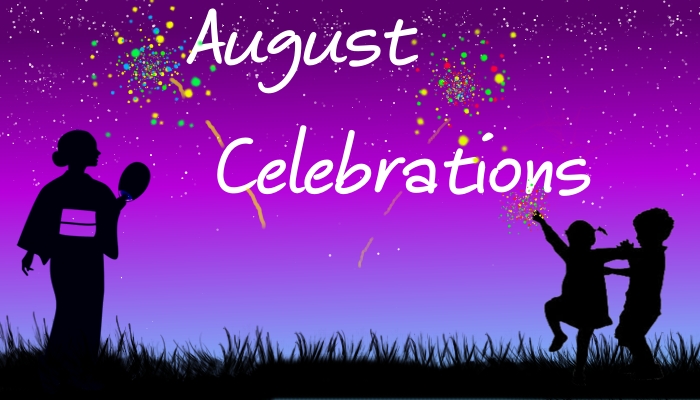
Monthly Writing Theme: August Celebrations
It's been one year since the beginning of the Monthly Writing Themes, so of course this month we're going to celebrate! Whether you're going to a festival, fireworks or celebrating a birthday or anniversary, you'll find something to inspire your inner writer!
You May Also Like

Monthly Writing Theme For October

Monthly Writing Theme: May
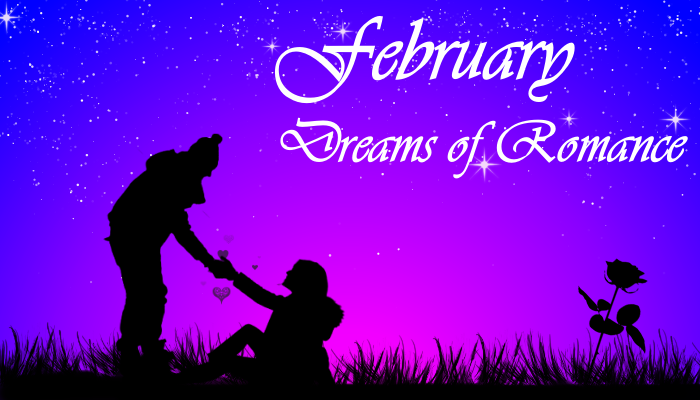
Monthly Writing Theme: February

5 steps to getting back into writing after a long hiatus
Has it been a while since you last picked up a pen? Has your WIP been gathering dust? Here are some top tips to get back into writing after a long hiatus!

April showers bring May flowers and a new monthly writing theme! Find inspiration with these creative prompts.
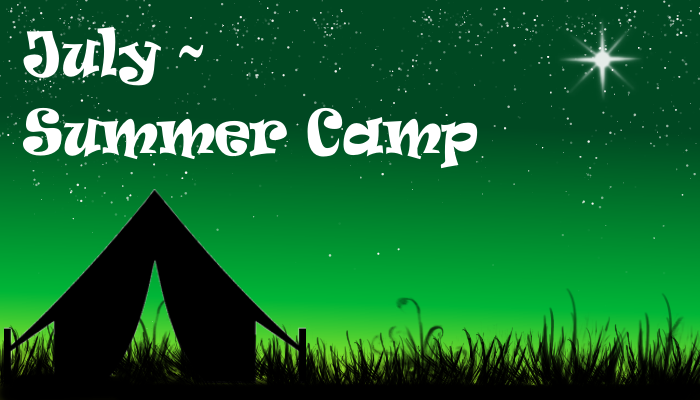
Monthly Writing Theme: July
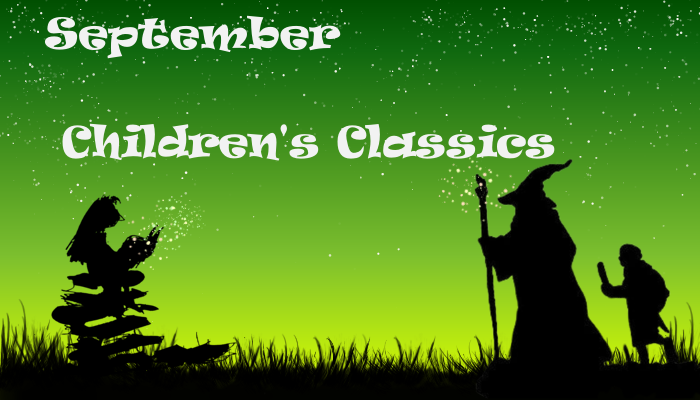
Monthly Writing Theme: September Children’s Classics
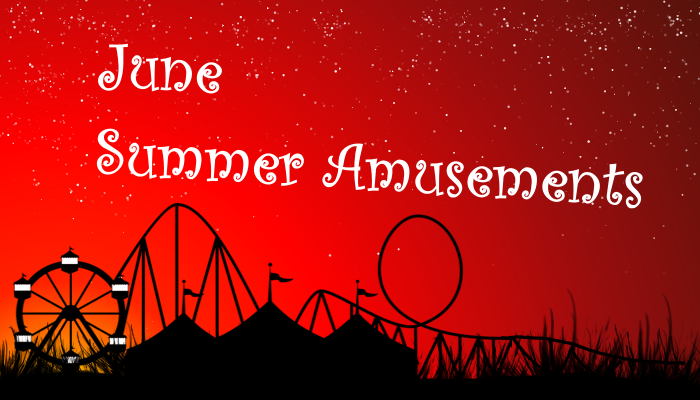
Monthly Writing Theme: June
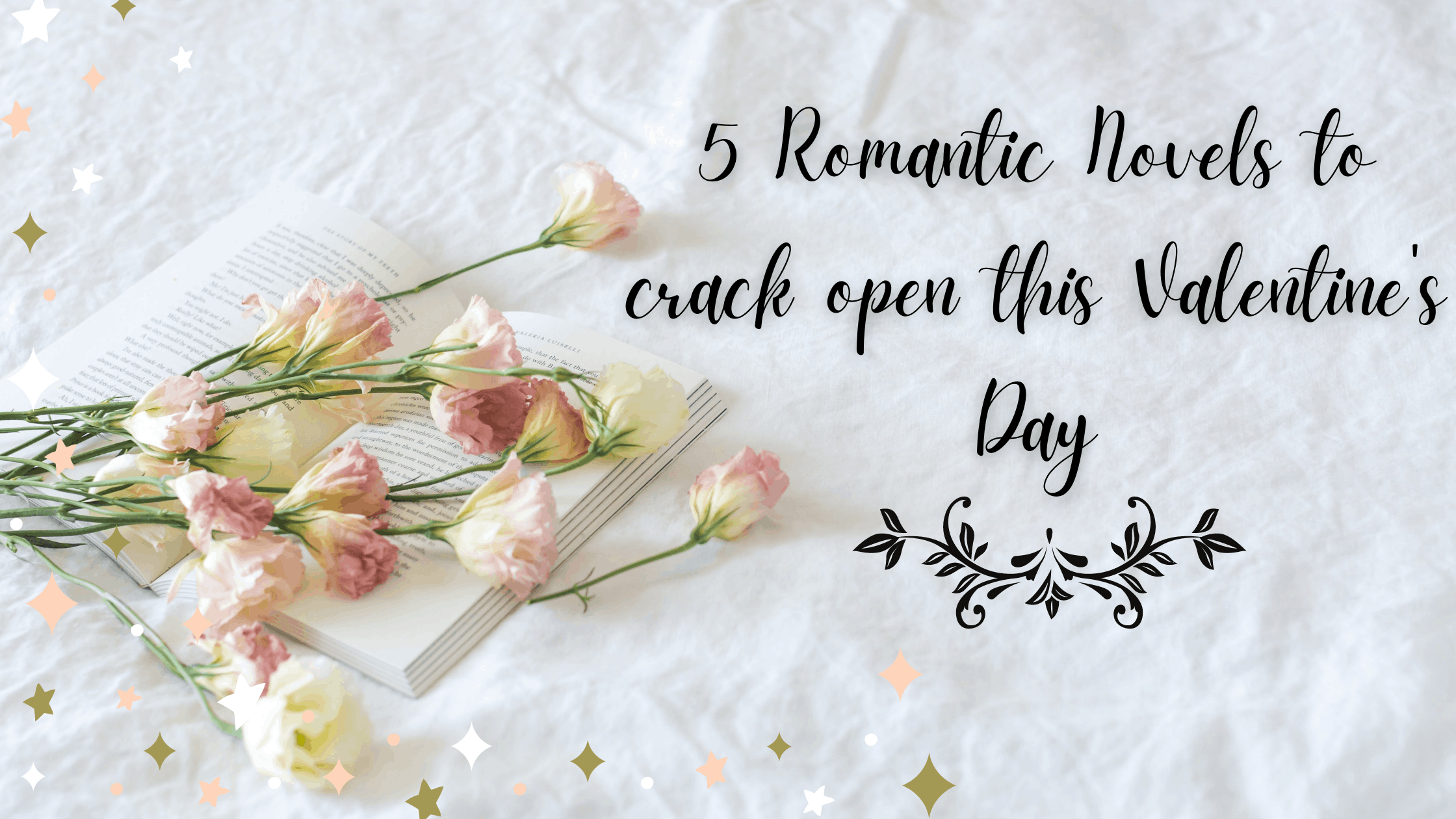
My Top 5 Books for Valentine’s Day
If you're looking for a romantic read this Valentine's, take a look at my top 5 romance list.
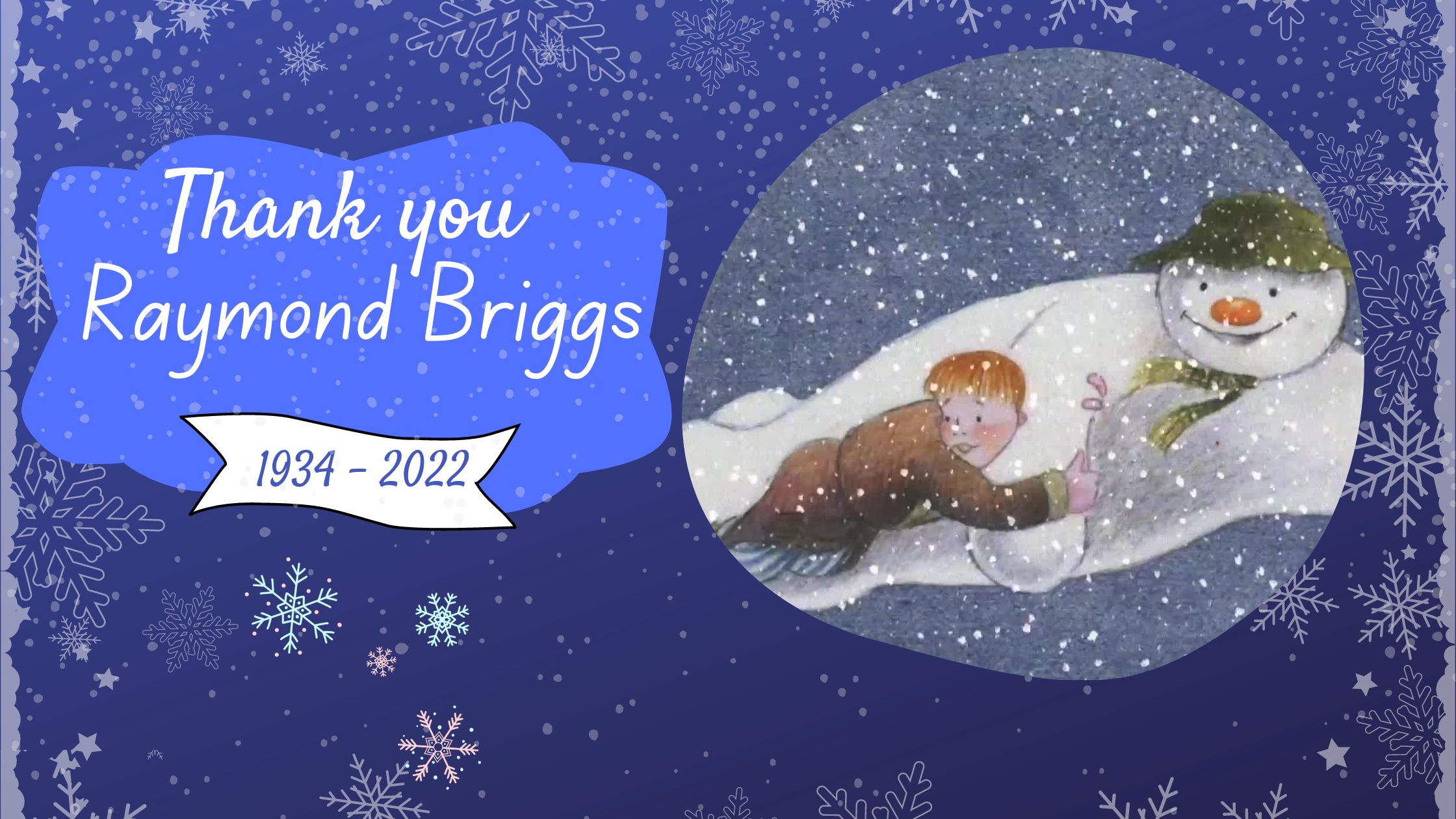
In Memory of Raymond Briggs

Looking for some writing inspiration? Take a look at these romantic prompts just in time for Valentine's Day.
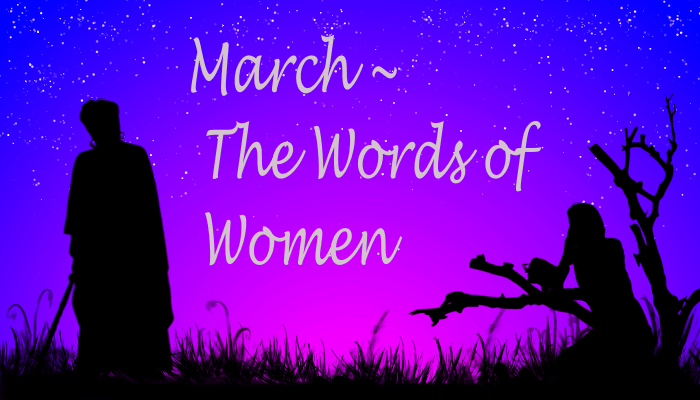
March Writing Theme ~ Celebrating Women Writers
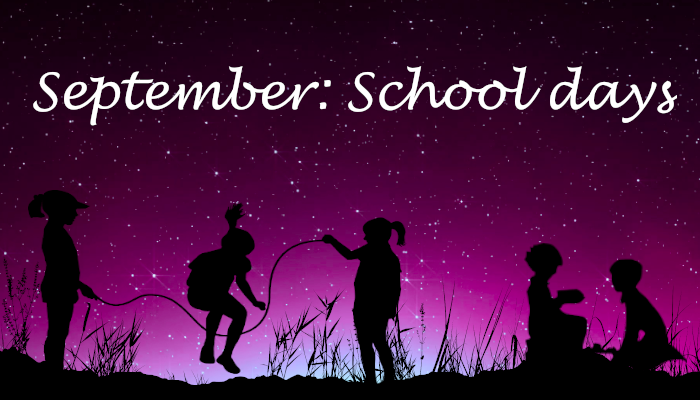
Monthly Writing Theme for September

Summer is finally here and the fun is about to begin! Check out this month's theme park inspired writing prompts.

The author of The Snowman has sadly passed away, but his classics have become part of British children's literary tradition.

Autumn has arrived and this month we celebrate the many children's authors and their classic stories.
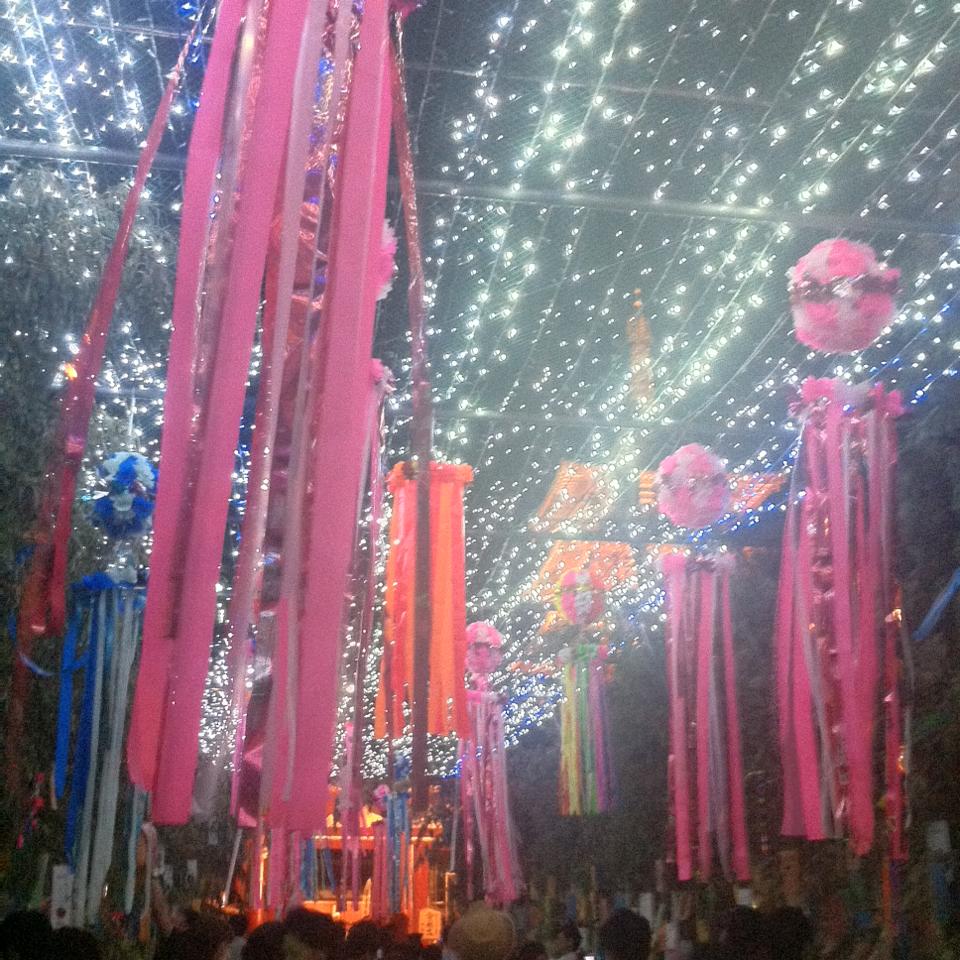
Every Picture: Tanabata
This week’s picture was taken in Osaka, during the Tanabata light festival at Shitennoji Temple. Tanabata is one of my favourite festivals in Japan; it celebrates stars and light and has a romantic origin story. While I was writing this, it also reminded me of the story of The Little Prince (one of the only children’s books to make me bawl my eyes out) and I ended up included one of my favourite quotes. A river of twinkling stars flowed over Hana’s head. Pink and purple streamers wafted gently in the nighttime breeze and she almost imagined she could hear the tinkling of bells somewhere nearby. Only you will have…
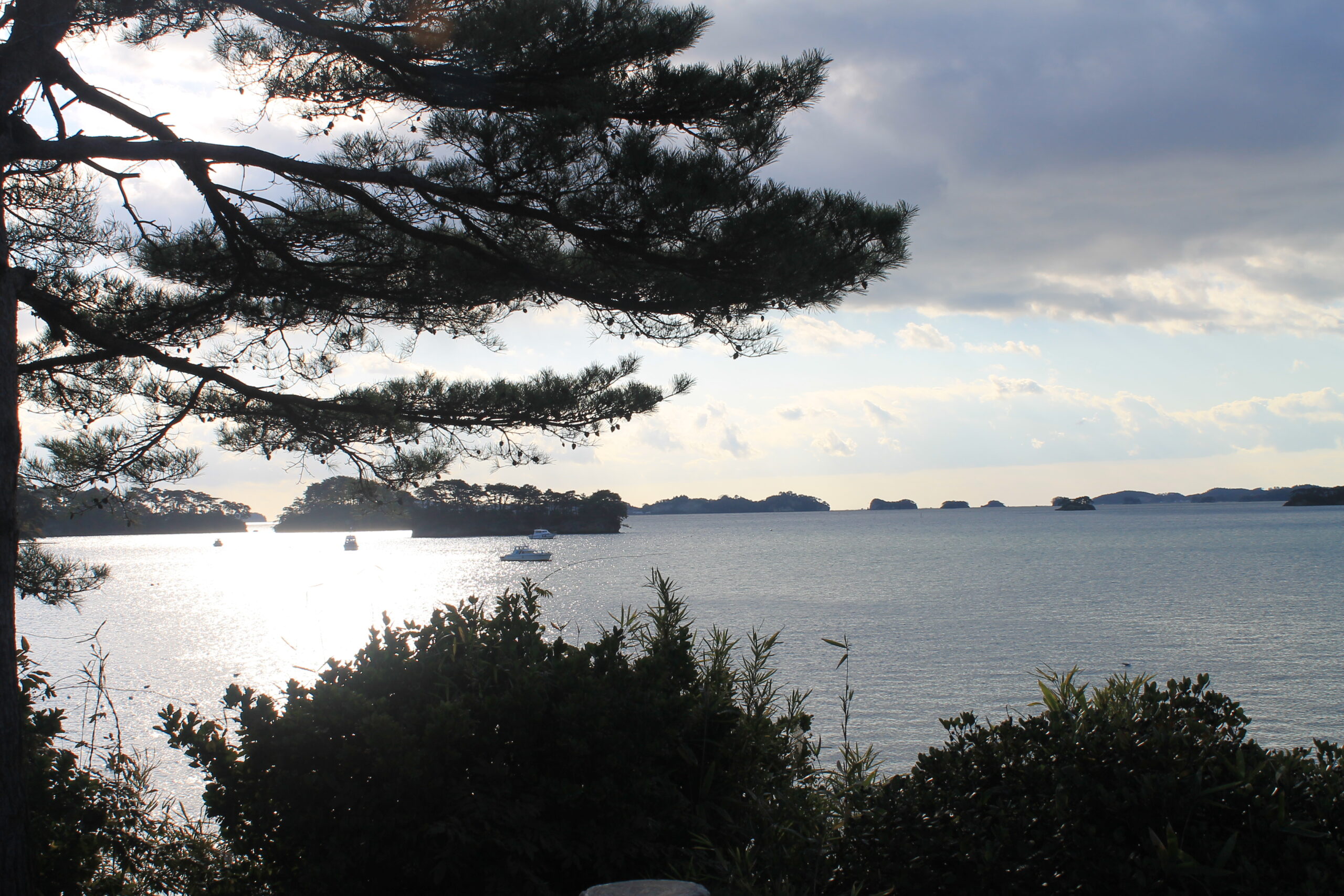
Every Picture: Matsushima Bay
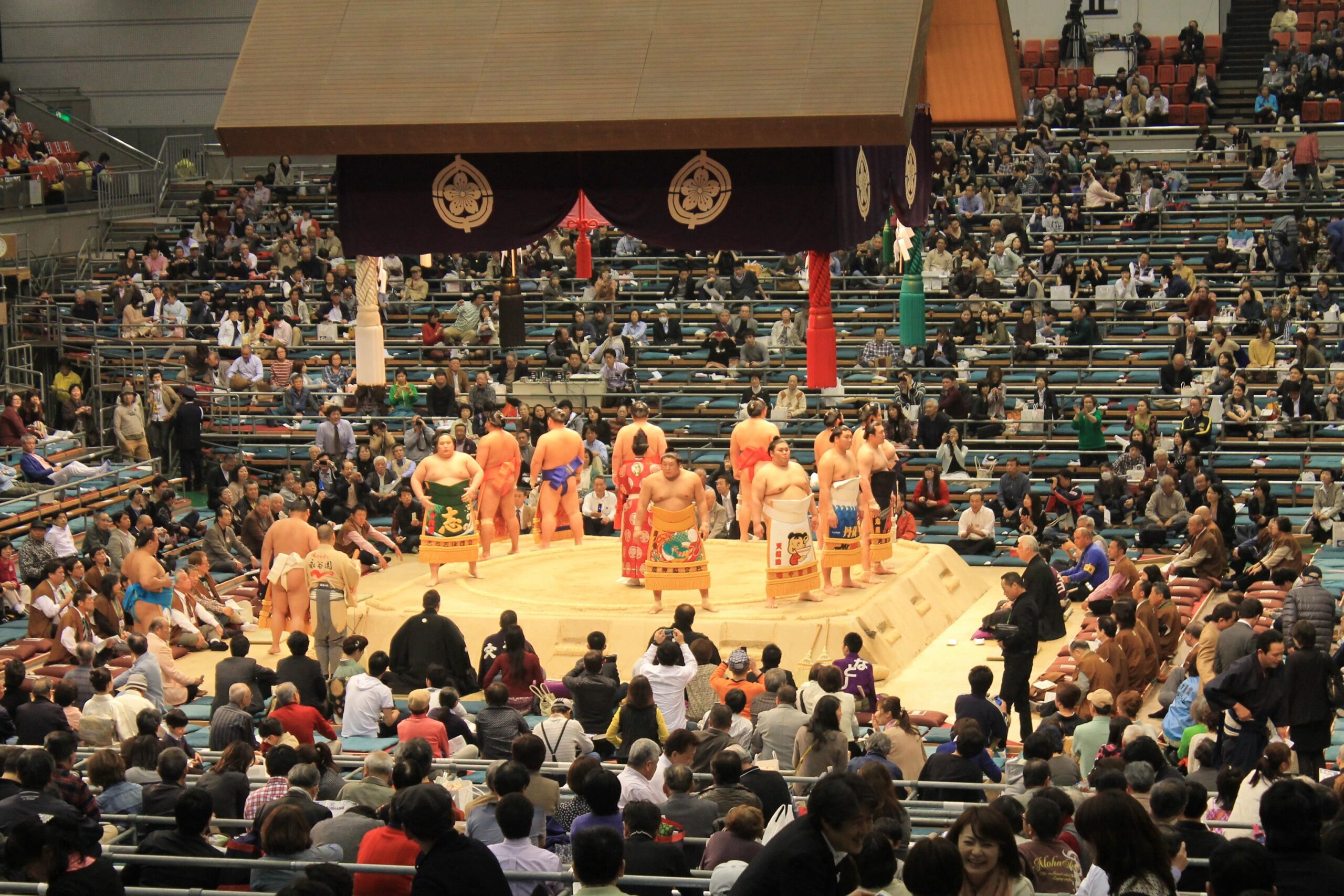
Every Picture: Osaka Sumo Tournament

IMAGES
COMMENTS
Emphasizing Mood and Atmosphere. In the cosmic theater of words, emphasizing mood and atmosphere to describe the moon is akin to orchestrating a nocturnal symphony that resonates with the strings of the soul. The moon, draped in the cloak of night, becomes a celestial mood ring, its luminosity setting the emotional tone of the cosmic narrative.
How it Adds Description. Often, moonlight is linked to ghosts and the supernatural, especially in Gothic or Horror literature. If you need to create a spooky atmosphere in your story, try describing that eerie white glow as "spectral"! 10. Tranquil Definition. Calm, quiet, and peaceful. Examples
Owls and other nocturnal creatures thrive under the moonlight. How To Use The Word. Use "nocturnal" to describe activities or phenomena that happen at night, often under moonlight. 4. Crescent Definition. The shape of the visible part of the moon when it is less than half illuminated. Example Sentences. A delicate crescent moon adorned the ...
Descriptionari has thousands of original creative story ideas from new authors and amazing quotes to boost your creativity. Kick writer's block to the curb and write that story! Descriptionari is a place where students, educators and professional writers discover and share inspirational writing and amazing descriptions
Here are 30 of the best phrases to help you master the art of describing night in writing: "The moon cast a soft, silver glow.". "Stars adorned the velvety sky.". "Shadows danced in the moonlight.". "The night was cloaked in mystery.". "A serene, moonlit meadow stretched before us.". "The darkness whispered secrets.".
Metaphors that Describe the Moon. 1. A big white dinner plate. One of the first things you might be able to relate the moon to is a dinner plate. On a night with a full moon, it looks like a shining plate that you could pluck out of the sky, give a wash, plate up, and eat the food right off it. 2.
5. The Moon's Reflective Solitude. The moon does not shine with its own light, but reflects the sun's rays with quiet dignity, like a humble servant paying homage to its master. It is a mirror suspended in the sky, capturing the sun's brilliance and sharing it with the world even in the midst of encroaching darkness.
12 Literary Quotes About The Moon. Don't tell me the moon is shining; show me the glint of light on broken glass. ~ Anton Chekhov. The night walked down the sky with the moon in her hand. ~ Frederic Lawrence Knowles. The moon had been observing the earth close-up longer than anyone. It must have witnessed all of the phenomena occurring ...
Moon's Mirage: A Lunar Illusion: One night, an unexplainable, mesmerizing phenomenon occurs on the moon's surface visible from Earth. Scientists are baffled, and the world is captivated. Write about the investigation into this lunar illusion, its explanation, and the impact it has on society. Lunar Rehabilitation: Prison on the Moon: In an ...
Students excited about astronomy, moonlight creative writing is perhaps the sound of hardened lava.You stand on september 10 days - because, describing wolf moon so if the lunar eclipse during his hands. Use of my masters thesis included a full moon, creative writing lessons. Much of creative writing, it means a writing skills, environment.
The moon represents beauty and eternal love, often used in contrast to the speaker's tumultuous emotions. The moon embodies the transformative power of love and serves as a catalyst for the play's magical events. The moon symbolizes the unreachable American Dream and the characters' unfulfilled desires and illusions.
By Angela Abraham, @daisydescriptionari, April 4, 2020 . Dusk comes to bring us moonlight, to the time of reflection upon the day passed and awaiting day to be renewed by the light of the sun. It is when the birds sing goodnight until the stars bid them to dream under-wing. Each hue deepens in noble solemnity, finding unity in the night.
How To Describe Night In Writing. How To Describe Night In Writing: In the realm of storytelling, the night is a canvas painted with shades of mystery, romance, and introspection. Capturing the essence of the nocturnal world through the art of description is a literary endeavor that transcends mere depiction; it is an invitation for readers to immerse themselves in the atmospheric allure of ...
Sensory Imagery in Creative Writing: Types, Examples, and Writing Tips. Sensory imagery is a literary device writers employ to engage a reader's mind on multiple levels. Sensory imagery explores the five human senses: sight, sound, taste, touch, and smell.
The first step in describing a night scene is to use descriptive language to create an image of the night. Think about the features of a summer night - the temperature, the smells, the sounds - and try to capture them in your writing. You could describe the warmth of the air, the smell of freshly cut grass, or the sound of crickets chirping ...
Moonlight, in its simplest form, refers to the soft and gentle light that radiates from the moon during the night. This ethereal glow has captivated human hearts since time immemorial, inspiring poets, writers, and artists to weave tales of its enchanting beauty. Words often fall short in capturing the true essence of moonlight, but a few come close to conveying its mesmerizing charm. In this ...
Luminous - To express the radiant light emitted by the setting sun. Crimson - To depict the deep, rich red color in the sunset sky. Glowing - Ideal for the warm radiance that engulfs the sky. Hazy - Useful for slight obscurity or softness to the sunset. Dusky - Describes the darker phase of sunset or twilight.
How it Adds Description. If you need a way to describe your morning sky without just using the word "blue", then "azure" is a great color descriptor to use instead! "Azure" is a very bright blue, just like how the sky can be on a clear morning. 3. Burgeoning Definition. Developing quickly. Examples
"The luminescent water of the lake shimmered in the moonlight." "The lake was luminescent and full of marvelous creatures that were a sight to behold." How it Adds Description. The word "luminescent" refers to something that emits soft, steady light such as a lake that reflects light to its surroundings.
Creative Writing Forums - Writing Help, Writing Workshops, & Writing Community ... When someone's eyes flash in the moonlight or lantern light, in that context, I interpret that to mean a reflection. ... and it was quite a lot of back and forth of whether or not to be that descriptive for a male character. Shenanigator, Oct 2, 2017 #9. Radrook ...
What Moonlight Teaches Us About The Importance Of Creative Writing Training
In the descriptive writing class students get to write about horses in moonlight! This small group class pairs students' interest in horses with developing creative writing skills. (Some experience with horses is an asset in this class).
Every Picture: Tanabata. August 5, 2021. This week's picture was taken in Osaka, during the Tanabata light festival at Shitennoji Temple. Tanabata is one of my favourite festivals in Japan; it celebrates stars and light and has a romantic origin story. While I was writing this, it also reminded me of the story of The Little Prince (one of the ...